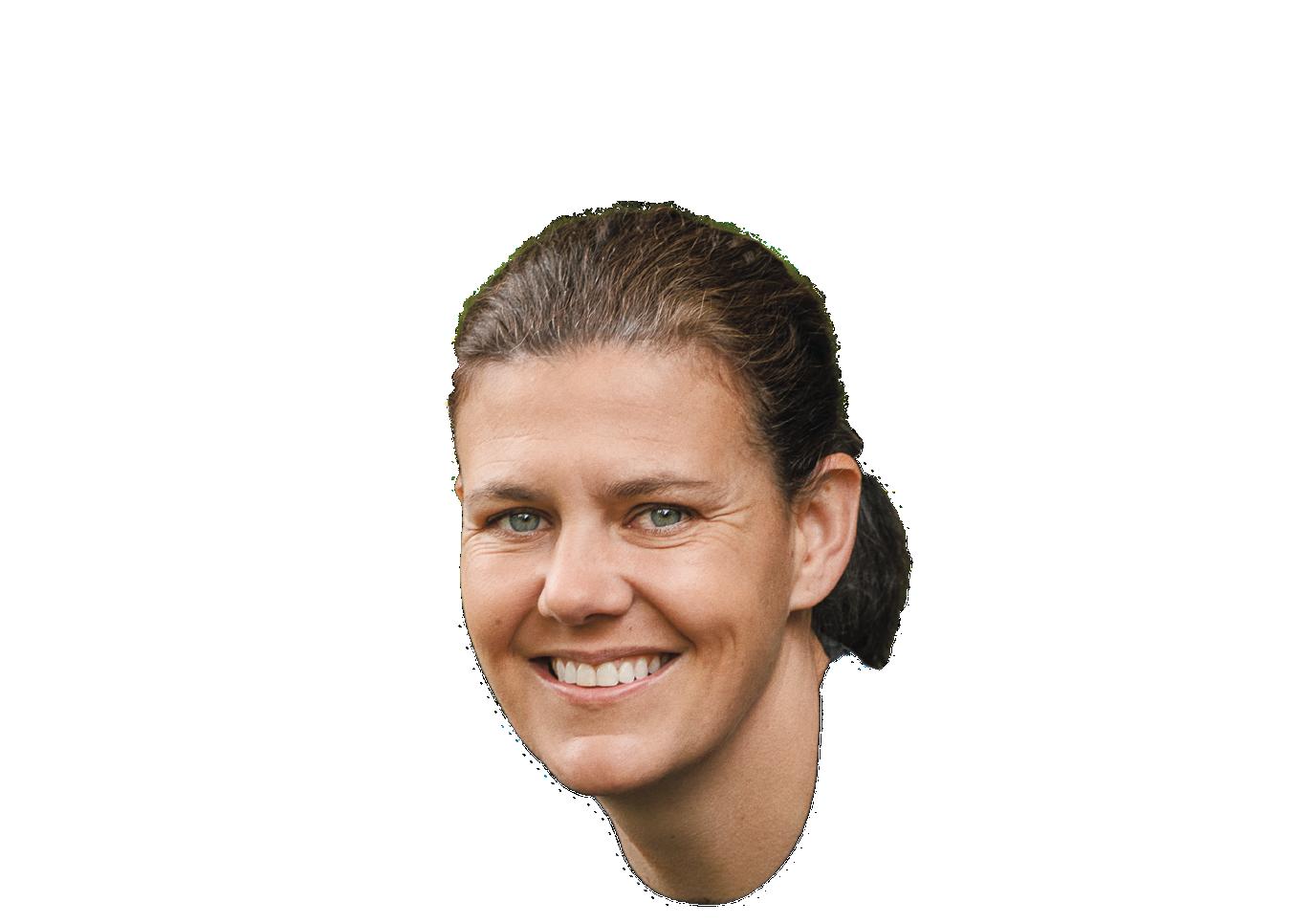
FROM GOALS TO GREATNESS


FROM GOALS TO GREATNESS
BUILDING A FUTURE WHERE EVERY GIRL CAN DREAM, PLAY, & LEAD
BEAUSOLEIL ISLAND AN ANISHINAABEG LANDSCAPE FOR ALL TO EXPLORE


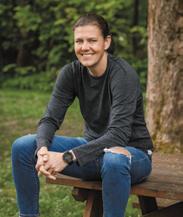

Christine Sinclair has always let her game speak for itself. With six FIFA Women’s World Cups, five Olympic Games, three NWSL championships, and more international goals than any player in history, she is widely regarded as one of the greatest soccer players of all time. For more than two decades, she has carried Canadian soccer to unprecedented heights, becoming a symbol of excellence and resilience on the world stage.
However, beyond the accolades, it was Sinclair’s quiet determination, grit, and humility that earned her the nickname ‘Sinc’ among teammates and fans. Now, with her professional playing days behind her, Sinclair is bringing this same fortitude to what comes next. Wanting her impact to transcend records and medals, she is dedicating this next chapter of her life to ensuring the next generation of girls in Canada can dream big and believe those goals are within reach.
“As I neared the end of my international
career, I wanted to find a tangible way to keep making a difference in the game I love,” Sinclair shared. “Launching the Foundation allows me to use my platform and legacy to continue driving change and creating impact off the field for years to come.”
In December 2023, she turned that vision into reality with the launch of the Christine Sinclair Foundation—a charitable organization dedicated to “empowering girls with goals.”
BEYOND THE PITCH
Today, Sinclair’s influence on the game continues to grow as she fights to break down the barriers that keep so many girls from staying in sport. Research from Canadian Women & Sport shows that more than one in five girls leave sport by late adolescence, often due to low confidence, cost, or lack of accessible opportunities.
“Far too many girls drop out of sport in their teen years,” Sinclair explained. “My goal is to keep as many girls as possible

focused on their ambitions, whatever they may be, and to provide the support they need along the way.”
rough the Christine Sinclair Foundation, she is working to create safe and welcoming spaces, affordable programming, and access to positive role models—all while advocating for gender equity in Canadian sport. “My hope is that the Foundation becomes a source of inspiration for young people on their journey, helping them see the potential of their dreams in this country and encouraging them to stay in sport—in whatever form that may take!”
THE SINCLAIR SOCCER SUMMIT
e Foundation’s first major initiative, the Sinclair Soccer Summit, launched in Vancouver in December 2024. For 44 girls aged 11 to 14, it was more than just a day on the pitch, it was an experience that blended sport with empowerment.
“It was such a special day, on and off the pitch, shared with teammates and colleagues from the Canadian Women’s National Team, Vancouver Rise FC, and an incredible group of partners like Canadian Tire, CIBC, and Subway,” Sinclair recalled.
e girls trained with female coaches, participated in workshops on leadership and self-esteem, and even played alongside Sinclair herself. “I got to play on a team with every girl too, which was pretty memorable!” she added.
e goal was for each participant to leave not only with new skills, but with a stronger sense of belonging and self belief. “My hope is that they left feeling inspired, motivated, and confident that there’s a place for them in sport—whether as
BY HOLLY CAMBRUZZI
players, coaches, or leaders—and that they see the lasting opportunities available to them in this country. And of course, I hope they made new friends, learned something new, and had a whole lot of fun.”
BREAKING DOWN BARRIERS
For Sinclair, breaking down barriers isn’t just about one event—it’s about building lasting pathways. She is working to expand the Sinclair Soccer Summit nationwide and using her voice to amplify conversations about equity and opportunity in sport.
She has also invested in the future of professional women’s soccer in Canada, joining the ownership group of Vancouver Rise FC, one of the founding clubs of the new Northern Super League, Canada’s first women’s professional soccer league. For young girls, seeing women leading at every level, from the pitch to the boardroom, is proof that their dreams have a place in this country.
Sinclair often points to the impact of representation in her own career. Growing up, she rarely saw women’s soccer on television or in the headlines. It wasn’t until she attended matches at the 1999 FIFA Women’s World Cup that she realized a professional career was possible.
She wants Canadian girls today to have a different experience: one where role models are visible and pathways are clear. “ e record shows what consistency, dedication and belief in yourself and your teammates can achieve,” she said of her historic scoring milestone. "I hope it stands as a legacy of possibility, showing girls that Canadian women athletes belong at the very top of world sport—and that they can get there too!"

ADVOCACY ROOTED IN FAMILY
Sinclair’s advocacy has always been personal. She has long been a spokesperson for the MS Society of Canada, inspired by her late mother Sandra, who lived with multiple sclerosis.
“My connection to MS through my late mother has shaped my voice as an advocate,” she shared. “I remember having the conversation with my mom and asking her permission to tell her story. at was a big moment for me—stepping out of my shyness and into advocacy to try to make the world a little bit better.” at experience, she said, taught her the power of sharing personal stories. “It showed me the power of personal stories to raise awareness, inspire action, and create change—and it’s influenced how I approach all my advocacy work today.”
A VISION FOR THE FUTURE
e Christine Sinclair Foundation is only just beginning. is year will bring a second
Soccer Summit, with plans to expand to Ontario in 2026, the same year Canada co-hosts the FIFA World Cup.
“Major events give us the spotlight to inspire and support even more young people, and to leave a lasting legacy in our country,” Sinclair explained. Her vision is for the Summit to become an annual event that travels across Canada, reaching diverse communities from coast to coast.
She’s also preparing to launch a scholarship programme to support girls pursuing high-performance athletics, providing the financial resources they need to pursue their dreams. “I know the impact scholarships can have—I wouldn’t have had my own university experience at the University of Portland without one!”
Looking ahead, Sinclair also plans to step outside her comfort zone more often, speaking at leadership and equity
events nationwide to amplify conversations about opportunity.
MORE THAN ONE PATH
If there’s one message Sinclair wants girls to take from her Foundation, it’s that sport is for everyone, not just those aiming for the Olympics.
“My advice to girls is this: Your passion and love for sport is powerful. You don’t have to be on an elite pathway to make a meaningful difference through sport,” she said. “Whether you want to play, coach, referee, manage, or simply play for fun, there is a place for you—and your contribution matters. Keep believing in yourself and your unique path. e game is bigger than any one pathway—and so are you.”
INSPIRING

TOMORROW’S ATHLETES
Christine Sinclair’s name is etched into history for her records and her
championships, but her greatest contribution may be the opportunities she’s creating for others.
“If my journey proves anything, it’s that big dreams are worth chasing, and that hard work and resilience can take you further than you ever imagined,” she reflected.
For Canadian girls lacing up their cleats today, those words and her actions are proof that the future of soccer in Canada is brighter than ever. Through her Foundation, her advocacy, and her belief in lifting young players, Sinclair is ensuring that her greatest victory is still to come: a level playing field where every girl can dream, play, and lead.
Learn more about the Christine Sinclair Foundation, upcoming events, and ways to support at girlswithgoals.ca
IN KITCHENS ACROSS CANADA,
Black Diamond has been a household staple for generations. From grilled cheese sandwiches after school to festive family dinners, the brand has long been synonymous with quality, trust, and cherished family connections. As part of the Lactalis Canada family, a Canadian dairy company, Black Diamond is building on this legacy by partnering with Food Banks Canada to help tackle one of the nation’s most pressing challenges—food insecurity.
Today, many households in Canada struggle to put food on the table. In fact, food insecurity has reached unprecedented levels throughout the country. According to Food Banks Canada, over two million visits are made to food banks in Canada each month, and of those, close to 700,000 are made on behalf of children. e ongoing affordability crisis has forced more families—even those with full-time employment—to seek support. e need for food banks has nearly doubled in the last five years. ese numbers underscore
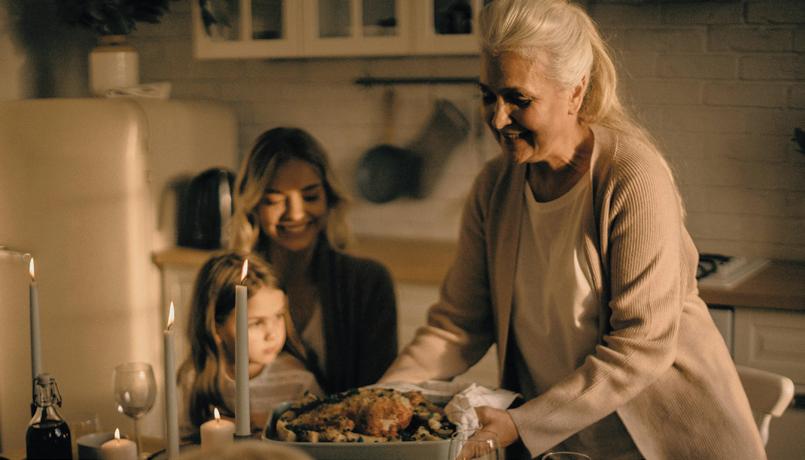
the urgent need for accessible, nutritious food nationwide.1
A POWERFUL PARTNERSHIP FOR CANADIAN COMMUNITIES
To help meet this need, Black Diamond has pledged $75,000

in product and funding to support Food Banks Canada’s efforts to distribute more fresh food. This contribution provides wholesome dairy products and ensures they reach households facing financial hardship.
“Black Diamond Canada and Food Banks Canada each bring unique strengths to the fi ght against food insecurity, and together, they form a partnership rooted in compassion, innovation, and impact,” says Erin Filey-Wronecki, Chief Development and Partnerships
Officer at Food Banks Canada.
“Black Diamond Canada contributes high-quality dairy products and financial support, while Food Banks Canada offers national reach, data-driven insights, and deep relationships with over 5,500 local food banks and community organizations across the country.
Over the past two years, this partnership has resulted in the donation of 200,000 meals to families in need. By combining corporate resources with nonprofit expertise, Black Diamond Canada and Food Banks Canada are not only addressing immediate hunger— they’re helping build a more resilient and nourished Canada.”
Beyond donations, this initiative provides dignity, hope, and meaningful support, helping families and communities access meals that sustain both health and well-being.
“Black Diamond Canada’s donations are making a real and immediate impact for families experiencing food insecurity,” continues Filey-Wronecki. “By providing fresh, nutritious dairy products—often inaccessible due to cost—and financial support, the company is helping ensure that essential foods reach those who need them most.
This support goes beyond filling plates—it strengthens families, uplifts communities, and reflects a shared commitment to a healthier future for all Canadians.”
As demand continues to climb, the brand remains committed to helping food banks reach their ambitious goals. By increasing the share of fresh food available, Black Diamond is addressing not only hunger but also the longterm health and well-being of families from coast to coast.
“Thanks to the support of generous partners like Black Diamond, we can help food banks make fresh food more accessible to families that need the support,” says Filey-Wronecki. “We can also raise critical awareness among our neighbours that providing fresh and nutritious food is the primary goal of food banks nationally.”
While the statistics highlight the urgency, the heart of this initiative lies in the stories of families who are able to sit down to a meal together, share a sense of normalcy, and experience the joy that comes from fresh food. For Black Diamond, helping make those moments possible is both a responsibility and a privilege.
— Erin Filey-Wronecki
“For the second consecutive year, Black Diamond is partnering with Food Banks Canada to help fight hunger—as we feel a fresh, nutritious meal brings families together and nourishes body and spirit,” explains Burhan Khan, VP Cheese & Tablespreads, Lactalis Canada. By partnering with Food Banks Canada, Black Diamond is living out its mission to enrich the lives of families—not only through taste and quality but through meaningful action in communities across the country, with a vision of a healthier, more nourished Canada. Learn more at blackdiamond.ca/en/ food-bank-support 1. SOURCE: FOOD BANKS CANADA, HUNGERCOUNT



Did you know that most Canadian police agencies, including the Canadian Armed Forces, have no aftercare funding for their retired Canine Officers? ese publicly funded agencies, stretched by limited taxpayer dollars, often struggle to allocate enough funds to maintain their working dogs, let alone support them after retirement. For larger organizations like the Toronto Police Service, York Regional Police, Ontario Provincial Police, and the RCMP, this leaves their canine veterans without a financial safety net after years of dedicated service.
at’s where Ned’s Wish steps in to bridge the gap. As Canada’s only organization supporting retired police and military service dogs, Ned’s Wish offers essential financial assistance, ensuring these canine heroes experience the quality of life they’ve earned. Since its inception, Ned’s Wish has registered 255 retired service dogs in its program, providing more than $535,000 in financial support for their care. Because the charity remains 100 per cent volunteer-run, every donor dollar
goes directly back to helping these heroes live out their golden years in comfort and dignity.
HONOURING OUR CANINE HEROES
Police and military dogs typically have work-focused lives from puppyhood, with working careers spanning six to nine years. When they retire, often due to age or health issues, the toll of their service stays with them.

The physically demanding nature of police work leaves many retired service dogs with chronic medical issues. These health concerns impact their quality of life and result in high medical costs. Ned’s Wish is a vital lifeline for these four-legged heroes, stepping in to cover these medical expenses and allowing them to experience comfort, care, and security in retirement.
PSD Major served with the

Toronto Police Service and rose to fame when he helped locate the remains of Bruce McArthur’s eight victims, a notorious case that shook the Greater Toronto Area. His work was even featured on CTV’s W5 in an episode titled “Sniffing Out Crime.” During Major's career, he was diagnosed with a heart condition and IBS that required regular medications and vet visits. Both Major and his handler retired together in 2021. Since then, Major's medical expenses have exceeded $18,000 and three significant surgeries. anks to the generous support of Ned’s Wish donors, Major’s healthcare needs are covered, so he is still enjoying the peaceful, well-deserved retirement he earned.
While Ontario police service dogs represent a smaller portion of Ned’s Wish beneficiaries, the organization has paid over $110,000 in medical expenses for these courageous dogs, including PSD Arry, a “Super Dog” who served with Chatham Kent Police Service. Through donor support, Ned’s Wish ensures that Arry and other
Ontario-based service dogs receive the aftercare they need to thrive in retirement.
AXEL’S LEGACY
In addition to direct medical support, Ned’s Wish is launching a new initiative to build Axel’s House, a decompression and re-homing sanctuary for retired service dogs, named in memory of Calgary Police Service Dog Axel, who passed away shortly after retirement. Axel’s House will provide a safe, supportive space for retired K9s to transition to civilian life, offering short-term boarding, medical care, behavioural evaluations, and re-homing services.
HELP A HERO
By contributing to Ned’s Wish, you’re helping ensure that retired police and military dogs get the care they need to enjoy the retirement they deserve. ey save our lives—now it’s time to return the favour.
Learn more and donate at nedswish.com
“Fire is sacred to many Indigenous nations across Turtle Island and represents spirit,” says Wendy Phillips, Elder, Vice President of Sacred Fire Productions, and a proud member of the Wasauksing First Nation. “Our spirit is sacred. Our spirit comes alive through the arts. Indigenous arts are sacred to our people—beyond voice, body, or mind—it’s a spiritual vibration that transcends this world.”
Since 2012, Sacred Fire Productions has embodied this belief, serving as a living bridge between Indigenous artists and the wider world. Based in Old Montréal, this not-for-profi t Indigenous arts organization and registered charity has created spaces where stories, voices, and creativity flourish.
Its mission is simple yet powerful: to bring Indigenous art and voices to the forefront, fostering dialogue, intercultural understanding, and economic empowerment. By showcasing First Nations, Inuit, and Métis cultures through exhibitions, workshops, and cultural events, Sacred Fire Productions strengthens the cultural ecosystem while addressing

the socioeconomic challenges Indigenous artists face. Integrity, resilience, and respect for artists as cultural leaders remain at its heart. e works presented are more than art; they are living expressions of history, identity, and resilience. rough Sacred Fire Productions, artists gain visibility and a platform for their voices, allowing exhibitions to become milestones of cultural recognition.
One powerful example is the
work of Anishinaabe artist Frank Polson. His monumental 13 Grandmother Moons, rooted in Anishinaabe teachings, was first shared with audiences through Sacred Fire Productions and is now being acquired by the Canadian Museum of History in Gatineau. is milestone ensures generations to come will encounter these teachings in one of Canada’s most important cultural institutions.
“This is an achievement that
honours the artist, the story, and the cultural legacy it represents,” says Ka’nahsohon Deer, Mohawk spiritual leader of the Walking Clay Clan and President of Sacred Fire Productions.
In September 2025, the organization began a new chapter with the relocation of its Cultural Space in the heart of Old Montréal at 43 rue des Sœurs-Grises. is vibrant hub for Indigenous arts, culture, and
economic reconciliation will feature rotating exhibitions every three months and a boutique showcasing Indigenous artisans and traditional practitioners. Each year, it comes alive on September 21st for Skennen’kó:wa Peace Days, welcoming the public to interactive workshops and cultural events. Open year-round, the Cultural Space is also available to corporate Canada, institutions, and community partners for cultural gatherings, private receptions, and conferences—a unique setting where business and culture meet.
“By uniting Indigenous voices and celebrating their resilience,” concludes Ka’nahsohon Deer, “we ensure the fire will keep burning, carrying forward the stories, teachings, and dreams of generations to come. In our Mohawk language, our word for family, ‘kahwa:tsire’, has the root word ‘o:tsire’… we are all related in the Sacred Hoop of life.”
Learn more at sacredfireproductions.ca


For over three decades, Sleep Country has been a force for good in Canada—and it all started with a small idea and a big dream. In 1994, Sleep Country opened its doors with just four storefronts, laying the foundation for what would become a national leader in sleep retail. Today, Sleep Country has 307 corporate-owned stores and 18 warehouses, but it's better known for the meaningful impact it has made in communities across the country.

Even more important than building a national brand is building trust within communities across the country, and over the last three decades, Sleep Country has made it a priority to give back. Their impact spans communities of every scale—from providing beds for the athletes in the Olympic Village during the 2010 Vancouver Winter Olympics to donating over $720,000 worth of sleep essentials to help families displaced by the devastation in Ukraine.
In fact, since 2004, the company has donated over 972,000 mattresses to those in need—almost enough to support the entire population of Ottawa! is impressive statistic is part of Sleep Country’s plan to tackle furniture poverty, a mission shared
with one of their charitable partners, Furniture Bank. Furniture poverty, while often invisible, has significant physical, emotional, and financial impacts on vulnerable communities. By redistributing gently used furniture and household items, Sleep Country and Furniture Bank give families and individuals in need the opportunity to furnish their homes. From supportive and comfortable places to rest their heads at night to furnishings that support gatherings, it’s a tangible solution to an invisible problem.
To make a good thing better, it’s a win-win partnership—in addition to promoting well-being and stability for those most in need, this initiative also diverts mattresses from landfills, giving them a second life and a greater purpose.
A mattress is an impactful purchase, and at Sleep Country, the impact goes beyond a good night’s sleep. Over time, mattresses can wear out, sag, and cause discomfort. On average, mattresses should be replaced every six to eight years—that’s a lot of mattresses being discarded each year. Sleep Country cares equally about both awakening Canadians to the power of sleep, as well as caring for the planet. at’s why, since 2004, Sleep Country has diverted over 2.9 million mattresses from landfills—the height of 1,600 CN Towers stacked on top of each other. And their work is far from over: By 2040, Sleep Country aims to achieve net-zero greenhouse gas (GHG) emissions, strengthening their commitment to creating positive and sustainable change.
In its mission to combat climate change, Sleep Country introduced the Green Glove Delivery program, which not only focuses on responsible mattress recycling but also extends to proactive tree-planting initiatives. e Green Glove service is Sleep Country’s premium delivery service, where delivery teams fully assemble and set up new mattresses and beds for customers. Sleep Country also takes back customers’ previously used mattresses, bed frames, and box springs, and removes all packaging materials, recycling them responsibly back at its distribution centres. But there’s more to the Green Glove program than innovative recycling practices. For every mattress recycled, Sleep Country plants a tree—so while you sleep, you’re also contributing to restoring ecosystems and making a tangible difference in the fight against climate change.
Teaming up with Veritree, a climate tech enterprise, Sleep Country aims to annually plant 150,000 trees in Canadian regions ravaged by wildfires, particularly in British Columbia's Cariboo region. at would take up the space of about 29 football fields! Operating within the Tsilhqot’in First Nation, Sleep Country has enlisted the help of local Indigenous tree planters, demonstrating a deep respect for the land and the people who know it best. is milestone initiative has an impressive impact: 150,000 mature trees are expected to sequester an average of about 32,000 metric tons of carbon dioxide, comparable to removing nearly 7,000 cars from the road for a year. Already, a good night’s sleep is paying off tenfold.

When life changes in an instant, finding a way forward can feel impossible. For Glen Bugg, that moment came in 2013 when he sustained a spinal cord injury (SCI) in a four-wheeler accident. Suddenly, he was faced with a world of new challenges like surgeries, rehabilitation, and reimagining every aspect of daily life. Like so many families across Ontario, he discovered that living with SCI is about more than medical care; it’s about having the right support, connections, and resources to rebuild. at’s where Spinal Cord Injury Ontario (SCIO) comes in. Since 1945, SCIO has been a lifeline for people adjusting to life with a spinal cord injury. Now in its 80th year, its mission remains as vital as ever: to ensure that people with spinal cord injuries and their families have the resources and community they need to thrive. ese resources, developed over decades of practice and lived experience, include service navigation, peer support, knowledge exchange, advocacy, and employment services.
In the early days after the accident, the Bugg family focused on the fundamentals—learning wheelchair skills, navigating inaccessible spaces, and adapting their home to meet Glen’s needs. While healthcare providers and therapists played a role, the turning point came when Glen connected with peers through SCIO.
“It made all the difference,” says Glen. “Talking to someone who’s living it, who can show you how to transfer, get through doors, or get back up when you fall, changes everything.”
e support and services provided by SCIO are not just helpful; they are life-changing. Beyond the physical impact, life with an SCI

can have an overwhelming and ongoing financial cost. Jenny recalls meeting people whose situations were far more challenging than their own. “We were lucky to have insurance. But so many families don’t, and they’re trying to raise kids, keep their homes, and adapt to this new life with no safety net.
at’s why we wanted to help.”
In 2024, the Bugg family launched their first community fundraiser in support of SCIO, aiming for $10,000. ey ended up surpassing their goal, bringing in $15,000 to fund vital programs and equipment. is year, they’re back with their second event, this time focusing on increasing participation from people who use wheelchairs and creating a more social, inclusive atmosphere.
The fundraiser is more than just an event; it’s a lifeline for those who may be feeling isolated after an injury. “After Glen’s accident, he barely knew anyone else in a wheelchair,” says Jenny. That changed when they connected with SCIO, opening the door to a community of peers, shared knowledge, and the kind
‘This Is My Treaty’ Shows Early
Their
Learning about the treaty relationship can begin at an incredibly early age and make a lifelong impact.
is is my Treaty, a book that shares the foundational elements of treaty relationships for ages three to six, shows us how to start sharing this understanding with early readers.
Written by treaty educator Kelly Crawford of M’Chigeeng First Nation and Anishinabek Nation
Communications Director Marci Becking, is is my Treaty aims to engage learners with treaty concepts related to concepts in their curriculum, such as sharing and the meaning of promises.
“Responsible Treaty citizenship requires an understanding of the spirit and intent of the treaty beyond simply recognizing rights,” shared Crawford. “The book speaks to the joint responsibility for land, animals, water, and relations with each other.”
e Truth and Reconciliation
Commission of Canada: Calls to Action Report emphasizes treaty education as a crucial component to reconciliation. is includes a call
of support that can transform isolation into hope.
SCIO’s Peer Support Program and community events foster exactly that kind of connection, building confidence and helping people re-engage with the world on their terms. “ e social side matters just as much as the physical,” Glen adds. “When you see someone else doing it, you realize you can too.”
e Bugg family is proof that awareness and action go hand in hand. Community-led events like theirs, and the many others hosted across Ontario in support of SCIO, are driving real change. ey bring people together, raise essential funds, and shine a spotlight on the challenges and triumphs of living with a spinal cord injury. ese events not only fuel vital programs but also strengthen the network of support that helps people rebuild their lives. Now is the time to get involved.
Donate, fundraise, volunteer, advocate, or learn more about life with a spinal cord injury today at sciontario.org
for a mandatory age-appropriate curriculum on Indian Residential Schools, Treaties, and Indigenous contributions to Canada for Grades K to 12.
“As we navigate the relationship between Indigenous and non-Indigenous people, education plays a critical role in fostering understanding, empathy, and respect,” explained Crawford.
The imagery used in the book is photography by Sara Cornthwaite of Nipissing First Nation and Charles Fiabo of Toronto, Ontario. e photos were specifically selected to encourage students to understand that we all have responsibilities in the treaty relationship.

Looking for a preschool and kindergarten book to help teach about the importance of Treaties? The Anishinabek Nation has created a NEW resource to help! Purchase "This is my Treaty" for $15 (plus shipping) in English, French or Anishinaabemowin!
This is my Treaty ISBN: 978-1-989054-14-7
Ceci est mon Traité ISBN: 978-1-989054-15-4
Mii maanda n’gchi-kwiinwin ISBN: 978-1-989054-16-1
To order, email: orders@anishinabek.ca
Also available at: goodminds.com
In the classroom, educators can use the book as a platform to discuss concepts of treaties. is is my Treaty can be used in early childhood education, kindergarten, and grade one, in addition to a variety of learning environments.
Students at this age are able to make connections to these concepts, as they are fundamental to their learning. e book is available in English, Anishinaabemowin, and French. Several sight words are used, with a focus on repetition to reinforce student learning.
e book also contains educator supports to encourage discussion and connections to the treaties, such as what a promise is and what responsibility looks like. e word “promise” in the Ontario Curriculum is age-appropriate, relatable, and creates inclusive environments of understanding for all students.
e title holds significant meaning for readers. is is my Treaty uses the word “this” instead of “that” to express that treaty is close to the individual and not something in
the past. Treaties are living documents, not things of the past. is year marks the 30th anniversary of the shooting death of unarmed land defender Anthony “Dudley” George of Kettle and Stony Point First Nation by an Ontario Provincial Police sniper. Treaty education was an important recommendation from the 2007 Report of the Ipperwash Inquiry. e Government of Ontario passed the Treaties Recognition Week Act, 2016, which declared that Treaties Recognition Week happen annually, the first full week in November.
The Anishinabek Nation Communications Department has been committed to producing treaty education resources for the public, as well as for schools that make connections to the Ontario Curriculum.
To order is is my Treaty and other treaty education books or resources, email orders@anishinabek.ca or visit goodminds.com
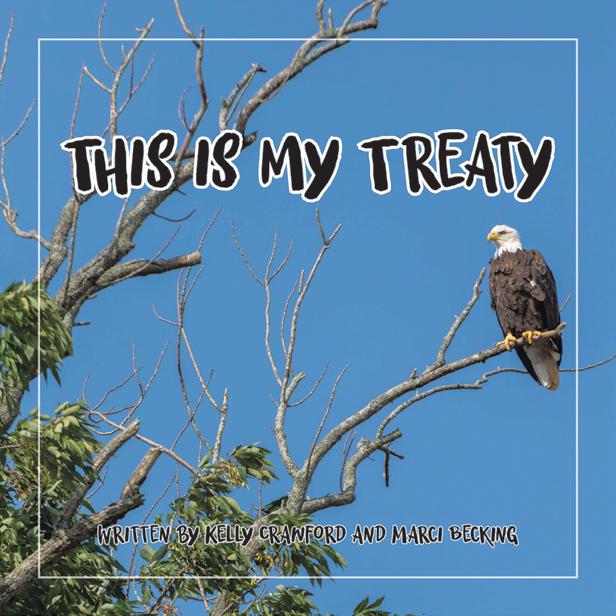

e United Nations Declaration on the Rights of Indigenous Peoples stands out as the world’s first international human rights instrument developed through the direct involvement of the very people whose rights are on the line. It represents the achievement of a global movement committed to partnership and human
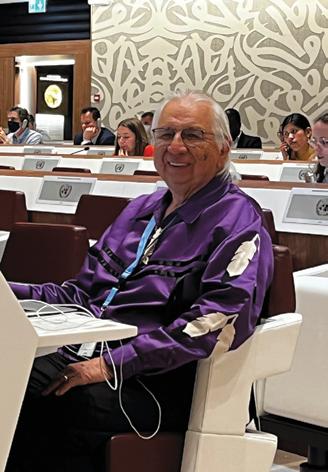
rights for all.
For more than three decades, beginning in the early 1970s, Indigenous rights defenders from around the world travelled back and forth to the UN headquarters in Geneva to ensure that universal human rights standards would be fairly applied to their own communities. Just imagine going to the UN, arranging whatever funds and accommodation you could. You’d be navigating maze-like UN buildings, joining meeting after meeting to advocate for your rights. is was no vacation, and there was no guarantee it would work. Many of these defenders committed years of their
lives to this effort. Some braved the risk of retaliation from hostile governments. Eventually, however, this heroic persistence paid off. Supported by allies, Indigenous Peoples were able to convince almost every UN member state that the standards in the Declaration were not only reasonable, but beneficial to all.
On September 13, 2007, the UN General Assembly overwhelmingly voted to adopt the final text of the UN Declaration. at text expressed the world’s conviction that recognizing the rights of Indigenous Peoples “will enhance harmonious and cooperative relations and must be acted on in a spirit of
partnership and mutual respect.”
On the day of the vote, Indigenous representatives from North America presented a joint statement to the UN that said:
“ e tragic and brutal story of what happened to us, especially at the hands of the governments, is well known… But today, with the adoption of the Declaration on the Rights of Indigenous Peoples by the United Nations General Assembly, we see the opportunity for a new beginning, for another kind of relationship with States in North America and indeed throughout the world.”
“We call upon federal, provincial, territorial, and municipal governments to fully adopt and implement the United Nations Declaration on the Rights of Indigenous Peoples as the framework for reconciliation.” —Truth and Reconciliation Commission of Canada, Call to Action #43
e TRC’s final report had a profound impact on Canadians. e report shone a light on the violence that has been inflicted on First Nations, Inuit, and Métis families and communities—and the ongoing harm that continues today. In its 94 Calls to Action, the TRC also pointed to a path forward: by acknowledging and
addressing the harms of residential schools and other colonial laws and policies, we can lay the foundation for a new and better relationship between Canada and Indigenous Peoples.
A decade later, there is much work still to be done. Despite the solemn commitments made by numerous
e United Nations Declaration on the Rights of Indigenous Peoples is the most comprehensive international human rights instrument to specifically address the human rights of Indigenous Peoples. However, the Declaration does not create new or special rights. Instead, it builds on the existing human rights standards that countries like Canada have already committed to uphold, and sets out how these standards must be applied—without discrimination—to the unique circumstances of Indigenous Peoples.
A critical part of the Declaration is the right to self-determination. is is the right of all peoples to determine their own futures, according to their own cultures and laws. It is a cornerstone of international law and the UN system. Article 3 of the Declaration states that the right
to self-determination must no longer be denied to Indigenous Peoples.
Recognizing that Indigenous Peoples represent a unique order of government, exercising its own jurisdiction, other articles in the Declaration call on states to work “in consultation and cooperation” with Indigenous Peoples through the representatives that they have freely chosen for themselves. The various articles also set out specific ways that states, like Canada, must work with and support Indigenous Peoples to restore their decision-making authority over their lands and in their communities.
Implementation of the Declaration has profound implications for the revitalization of Indigenous languages and cultures, the health and vitality of Indigenous communities, and the protection of Indigenous
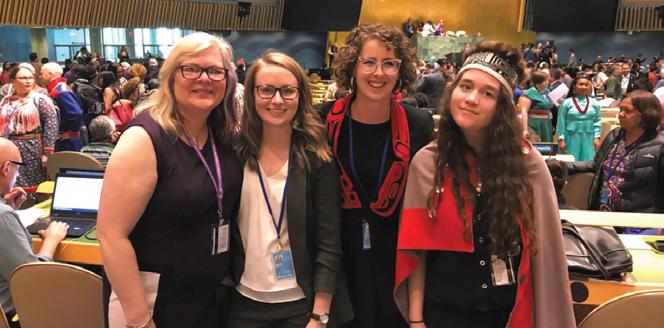
traditions. e Declaration constitutes, in its own words, “the minimum standards for the survival, dignity, and wellbeing of the Indigenous Peoples of the world.”
In 2021, the federal government passed national legislation to implement the Declaration . This Act explicitly recognizes that the Declaration is “a universal international human rights instrument with application in Canadian law.” The Act also requires the federal government to work “in consultation and cooperation with Indigenous Peoples” and to “take all measures necessary to ensure that the laws of Canada are consistent with the Declaration .”
More recently, the Supreme Court of Canada has ruled that the human rights standards set out in the Declaration are conclusively “part of the positive law of Canada.”
politicians, implementation of the Calls to Action has been slow and uneven. However, progress is possible. e TRC identifi es the UN Declaration as the framework for reconciliation to flourish in 21st-century Canada. Clearly, the Declaration is incredibly important. So what is it?
• The Declaration was adopted by the UN General Assembly in 2007. The Declaration affirms the collective rights of Indigenous Nations or Peoples and the individual rights of Indigenous persons.
Like all other human rights, the rights affirmed in the Declaration are inherent: governments can’t give them or take them away. All governments have a responsibility to respect, protect, and fulfill these rights.
• Canadian courts and Tribunals have already applied the Declaration in the interpretation of Canadian law.
• The Declaration is mentioned 21 times in the Truth and Reconciliation Commission’s 94 Calls to Action
e history of residential schools highlights the horrific consequences of governments having unchecked power to determine the fate of Indigenous Peoples. e UN Declaration provides another path forward, based on respect for the right of Indigenous Peoples to make their own decisions.
Global adoption of the UN Declaration was an extraordinary triumph for the Indigenous advocates who worked for so long to make it possible. Part of the enduring legacy of the TRC is to clearly establish that the Declaration is part
of the law of the land in Canada. Full implementation of the Declaration will require a whole-of-government approach. It takes all people in Canada to hold our governments to the human rights standards they’ve committed to. We can remind them of our support for the human rights of all.
Visit QuakerService.ca/Booklet to receive a FREE mini UN Declaration on the Rights of Indigenous Peoples booklet and/or a Truth and Reconciliation Commission Calls to Action booklet.





Marco* came to Toronto from Montreal, seeking steady employment in the construction industry. But soon after, he was robbed and started a forty-week sojourn on Toronto’s sidewalks.
“Everything went downhill. I wandered the streets, which are much different by day than by night. There are many alleys, so you just learn how to disappear,” he said of that frightening time.
He couldn’t find work and felt judged by his appearance. “I sat on the sidewalk and asked for help, but people would walk by without even looking. I was invisible. Sometimes I spent 18 to 20 hours not talking to a soul. e first month, I couldn’t believe I was there. It was complete desperation.”
Julian Picon, Director of Shelter and Recovery at Scott Mission's 24/7 men's shelter, explained, “ ere are so many people on the street with nowhere to go. Honestly, there is a paradigm of thinking that all people are homeless because of substance disorders or mental illnesses, and
Read about his journey to safe shelter and hope.
while these are also very prevalent, it’s not always the case.”
After 40 weeks on the street, Marco believed he would never find a warm bed. “I would wake up from the cold and see my legs, but I couldn’t move them,” he remembered. “My survival instinct was always on, and many days I felt like there was no hope for a guy like me.”
en, he called Central Intake at the City of Toronto again and heard, “Yes, we have a bed for you. Go to the Winter Respite Centre at Scott Mission.”
When he arrived, he was given a hot breakfast and was blessed by the kindness of the staff. “It takes great staff to have a great Mission, and Scott Mission is the best,” he says after receiving care at the Mission’s health clinic.
Now, Marco has his own bed at Scott Mission’s men’s shelter, where he continues to recover. “I feel better each day,” he said, radiating positivity. “We have good meals here, and I’m grateful to Scott Mission for everything. I want to contribute, so I volunteer
every ursday for laundry day.”
Spiritual care is foundational to the work of the Mission, and Marco says, “God helps me to keep on going, and I feel hopeful now that I will get back on my feet and find normal housing at
some point. I look forward to having a job again, and the Mission is helping me with that.”
Marco is genuinely grateful, “I just want to say thank you to everyone who supports the Mission. I hope to get back on

my feet, and it will be thanks to you.”
For 84 years, Scott Mission has been actively caring for GTA neighbours in need by providing support and spiritual care.
“For I was hungry, and you gave me something to eat, I was thirsty, and you gave me something to drink, I was a stranger, and you invited me in…I was sick, and you looked after me…” Matthew 25:35-36
During this Thanksgiving season, Scott Mission will serve 64,500 meals and continue to open its doors to men, like Marco, who need a helping hand to build a better future.
Scott Mission is a Christian, non-denominational organization dedicated to supporting people experiencing hunger and homelessness in Toronto.
Provide meals, shelter, and hope
Since 1999, e Circle of Turtle Lodge (CTL) has been a gathering place for culture, healing, and community in the Ottawa Valley. Fully Indigenous-owned and a registered charity, CTL was founded with a clear purpose: to bring back the Traditional Culture and Teachings of the region’s Indigenous Peoples and to pass them on for generations to come.
From its early days, CTL has created experiences that touch people’s lives. It published Anishnabe 101, a primer that has helped countless readers better understand Indigenous culture. It has hosted retreats like Getting the Basics at Golden Lake, and Anishinabikwe Rising workshops where women learned traditional arts and crafts, shared Moon Ceremonies, and gathered in Talking Circles. More recently, it opened e Indigenous Hub in Pembroke, which became a vibrant space for connection between summer 2022 and fall 2023.
Alongside these programs, CTL has worked to keep the Algonquin language alive, mentoring teachers and producing Songs for Ceremony. Each project has carried the same

spirit: to protect and celebrate Indigenous traditions, while giving people a place to belong. What makes CTL unique is not just what it does, but how it does it. Its work is guided by an Indigenous worldview centred on Harmony and Balance, the belief that all of creation is connected, and that life is always moving toward equilibrium.
Equally important is the principle of All My Relations. Plants, animals, rocks, rivers, and even the wind are not resources, but relatives. ey are part of the same family we
are, and they are equally deserving of care and respect. is worldview drives CTL forward with a unique mission to restore the balance between people and the wider world.
THE 5-YEAR PLAN
Now, CTL is at a turning point. To grow from a volunteer-driven initiative into a sustainable, professional institution, the organization has set an ambitious five-year plan:
• By 2026: hire a full-time Indigenous Office Manager to steady operations and support volunteers.
• By 2028: appoint an Executive Director, secure long-term funding partners, and raise seed money for land.
• Beyond: build the CTL Healing Lodge, a permanent sanctuary in the woods where ceremonies, teachings, and community gatherings can flourish.
e Healing Lodge is a crucial part of this mission, as it is the physical expression of CTL’s mission. Across Canada, Indigenous communities face high rates of suicide and substance abuse, issues tied
directly to colonialism, cultural loss, and systemic discrimination.
CTL believes the antidote lies in culture: in songs, teachings, ceremony, and the simple power of belonging. e Healing Lodge would offer a safe, sacred space for this work, built on land returned through a Land Back initiative. It would be both practical and symbolic: a home for healing, and a step toward justice.
FUNDING
INDIGENOUS FUTURES
Like many grassroots organizations, CTL faces the constant challenge of stable funding. Its operations rely heavily on volunteers and short-term project grants, which rarely cover core costs. Meanwhile, the need is immense. Renfrew County is home to more than 8,400 Indigenous people, but without a Native Friendship Centre, services are limited. Even as one of the few lifelines available, CTL can only do so much with their own strained resources. e community needs sustainable investment, not only for programs, but for the people who make them possible.
To strengthen its voice, CTL has
welcomed artist and Elder Bradly “Dreamwalker” MacDonald as spokesperson. Known nationally for his cultural leadership and fundraising efforts, MacDonald brings a respected presence to CTL’s vision. At the same time, the organization is embracing Debwewin (meaning truth in Anishinaabemowin), an Indigenous identity verification system, to ensure transparency and accountability. For Canada’s corporate and community leaders, the Truth and Reconciliation Commission’s Calls to Action are a guide. Call to Action #92 urges the private sector to go beyond words and take meaningful steps. Supporting CTL is one such step. In just 25 years, CTL has shown what’s possible: publishing books, hosting retreats, mentoring teachers, and creating safe cultural spaces. With the right support, it is poised to do even more. By investing in CTL, partners have the chance to fill a critical service gap, support Indigenous self-determination, and be part of something lasting: a sanctuary for culture and healing in the Ottawa Valley.






For too many Autistic and neurodivergent people in Canada, moments of celebration, stress, or loneliness can feel isolating without someone to call who truly understands. at is about to change.
Autism Canada, with founding sponsor CN, is launching Empowering Connections, a National Support Line that will open during Autism Acceptance Month in October 2025. e first service of its kind in Canada, the Support Line will provide direct access to compassionate, peerinformed connection for Autistic people, neurodivergents, and their families and caregivers nationwide.
MEETING A
NATIONAL NEED
Today, more than 1.8 per cent of adults in Canada are Autistic, yet only 16 per cent report very good or excellent mental health, compared to 70 per cent of the general population. More than half also live with co-occurring mental health conditions. ese realities highlight the urgent need for a barrier-free,
autism-informed support service that is accessible across the country.
“Empowering Connections, our National Support Line, will be a vital connection point for Autistic people and caregivers seeking informed, compassionate, and lived-experience guidance, no matter where they live in Canada,” said Jamie McCleary, Executive Director at Autism Canada.
Empowering Connections is designed to be more than a crisis resource. It will also serve as a place to share life’s everyday moments—from navigating challenges to celebrating personal milestones or simply connecting with someone who understands.
e Support Line will offer multiple ways to connect, including phone, chat, virtual calls, video, and email. Services will be fully bilingual, available in both English and French, to ensure accessibility across Canada. ese options are meant to respect diverse communication

preferences and sensory needs, ensuring that each caller feels comfortable and supported.
AUTISTIC-LED AND GROUNDED IN LIVED
At the heart of Empowering Connections is its commitment to being Autistic-led. Trained Autistic Support Line Navigators with lived experience will staff the line, offering empathy, active listening, and guidance. eir role is not only to provide connection and understanding but also to
link families and caregivers with local community resources. is approach ensures authenticity, trust, and a deeper level of support that traditional services often lack.
OCTOBER 2025
Miranda Pachal, Senior Manager, Employee Experience, Learning & Compliance at CN has high praise for the initiative. “As co-chair of CN’s A.D.A.P.T. (Allies of Diverse ABILITIES Partnering Together)
Employee Resource Group, I’m thrilled about the launch of this
helpline. For families, caregivers, and individuals on the autism spectrum, the promise of a dedicated resource—where understanding is always at the forefront—marks a transformative milestone in the landscape of social advocacy. e helpline is more than just a phone number; it is a symbol of inclusion and recognizes the challenges faced by people touched by autism…. I am proud to be part of an organization that values caring for one another.”
With CN as founding sponsor, Empowering Connections represents a new era of inclusion and community connection in Canada. CN’s support helps ensure this barrier-free service reaches people nationwide, affirming the importance of inclusion and community care. By centring lived experience, the National Support Line affirms that every voice deserves to be heard.
For updates on the launch, visit autismcanada.org/ empoweringconnections





Loud applause subsides to quiet anticipation as the four musicians re-enter the stage for an encore to their Transatlantic Concert. It is summer 2023 and Moose Cree First Nation (MCFN) is hosting its annual Gathering of Our People, the regional Mushkegowuk Creefest, and the Nipin (summer) Celebration of the More than 350 Commemorative Year—the largest of eight events organized by the Moose River Heritage and Hospitality Association (MRHHA) to mark Moose Factory’s “More than 350 years in the Making: from Time Immemorial to 1673 to 2023.”
Kris Drever, award-winning Scottish-Orcadian folk musician, introduces their last song: a local take on an old Scottish farewell tune, renamed “Farewell to Moose Factory.” “ at’s just for him,” quips John Cheechoo, a son of an accomplished Cree fiddler, one of several who have toured Orkney and Scotland. John is joined by another local Cree musician, Stan Louttit, who also has Orkney ancestry. e fourth musician is the renowned Métis fiddler Alicia Blore. Greg Spence, the seasoned CreeFest organizer—who has been leading it for two decades—comments quietly that this is one of the best performances he has ever seen. Anywhere.

HONOURING
Earlier that day, a plaque had been unveiled to commemorate a history that long predates the 1673 establishment of Moose Factory as the oldest “overseas” trans-Atlantic trading hub of the Hudson’s Bay Company (HBC). is National Historic Site is also Ontario’s oldest English-speaking permanent settlement and subarctic North America’s oldest continuous site of Indigenous-European exchange and intermarriage. Together with its younger, endof-the-rail neighbour, Moosonee, Moose Factory is a majority-Cree version of multicultural Canada. Since the last ice age ended, the Môsonîwililiwak—people of the Moose River—have been interacting and intermarrying with people from around James Bay and beyond. ese relationships have been governed—accepted, rejected, measured, or corrected—based on values like Šawelihcikewin (the More than 350 motto), which translates as
“reciprocity,” “hospitality,” “receiving with gratitude and a desire to give back.” No exception was made for relationships with transatlantic newcomers. It was this Cree ethic, reinforced by Frederick Mark’s adopted Christianity and two centuries of exchange and intermarriage—including in his own family—that informed his signature of Treaty Nine in 1905 as Moose Cree’s first elected chief. Music and culture have always been part of this exchange, resulting in one of the country’s highest per capita populations of recording and award-winning musicians. J’shtug! Ever good those Crees! In 1988, Canada’s "First Lady of Guitar" and fi ve-time Juno winner arrived by canoe to play a concert for a packed audience in Moose Factory’s iconic old St. omas Anglican Church. Welcomed by the local choir with Cree hymns, Liona Boyd was introduced in Cree by Arnold Cheechoo, the late brother of national award-winning
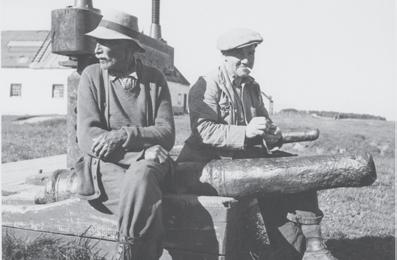
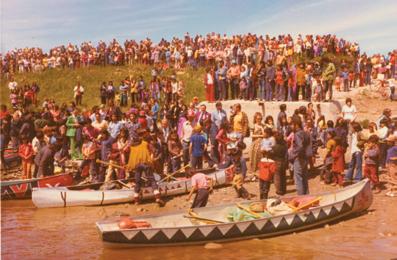
musician Vern Cheechoo. is family name is also associated with hockey, thanks to Jonathan Cheechoo—the NHL’s top scorer in 2005-06. "When we arrived in Moose Factory,” reflects Liona, “I met William [Louttit], a young Cree musician … As I sat on his doorstep and we played music … [it] seemed the perfect way to bring our two cultures together. … Perhaps nowhere else in the village was the fusion of the two cultures more obvious than at the church, my concert's venue. Here, the symbols were undeniably Christian, but their execution was just as undeniably Cree. I realized that my journey had not only opened my eyes but made my focus clearer. We set out in the footsteps of ghosts, but what we found were very real people."
WE ARE THE ILILIWAK
We are these very real Ililiwak. e Moose Cree dictionary gives three meanings for this term, all of which apply here: human beings, Cree people specifically, and Indigenous people. Like the river we call home, we are shaped by many sources and currents. Some of us were born here to ancestors who have called this land home since time beyond memory; others were borne here—over ancient waterways or the Polar Bear Express. For much more than 350 years, these currents have mixed and intermingled.
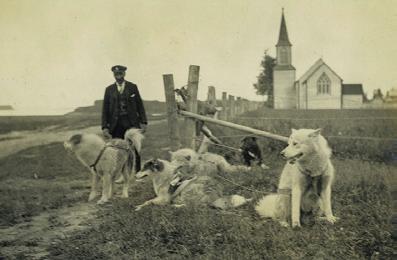

Former Moose Cree Chief Norm Wesley, one of the choir members who sang at Liona’s 1988 concert, has joined her and ten others as am- bassadors for the Šawelihcikewin Campaign. ey are raising funds, through charity partner Relèven (releven.org), to restore and reopen their former concert venue, Old St. omas. e goal is for it to serve the community in new ways, with programming focused on strengthening families, language, arts, and culture.
“In a time when we are tearing down statues and monuments,” says Norm, “this community has chosen to uphold this building, this historic church, because of what it stands for. It’s in remembrance of our heritage, our past, the good things and the bad things, and things that we say we will never, ever forget.”
“In the near future,” states current MCFN Chief Peter Wesley, Old St. omas “... will once again play an important role in our lives as residents of Moose Factory Island, as a multi-use community centre … [and] a way for … visitors to learn about Moose Cree First Nation and Moose Factory as a whole.”
e MRHHA is a joint creation of MCFN, MoCreebec Eeyoud Council, and the Town of Moosonee, as well as grassroots community members and friends from near and far. Our mission is to build a future with our shared past, with a focus on the Moose
Cree homeland and the people who call it home or are welcomed here in the ancient spirit of hospitality.
Our More than 350 Initiative was created with two main goals: to foster a 360º holistic vision of our past, present, and future, and to promote holistic community and economic development founded on Cree principles such as Šawelihcikewin. Our effort to restore Old St. omas is one part of this initiative for which we have received a National Trust for Canada award recognizing “exemplary cross-cultural cooperation in conservation and reconciliation.” More than restoring a building, this is about restoring the best of the relationships it represents as a way of healing the more challenging aspects of that same history.
Sign up for our newsletter at mrhha.ca to find out more about our 360º vision. ere is a place for you in it!


We are grateful for the support of our co-founding members —MCFN, MoCreebec and Moosonee; major funders— Canada, Ontario, Wakenagun Community Futures; and many others—listed on our website.











































































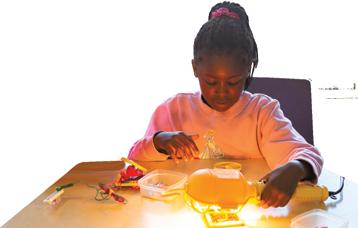
It was her favourite day of Grade 2, and it planted the idea in her mind that she could be a scientist.
Before, science was just like any other subject for Maddie. She liked it, but it didn’t stand out. That changed when her class took part in a Scientists in School workshop. “I remember the excitement when we knew we would have a Scientists in School day. I had a lot of fun doing the workshops, and so I started having fun in science class as well,” she said.
When a young learner like Maddie starts to have fun with science, it ignites their curiosity
and propels them to learn more. They start to see the world like a scientist, opening the door to a future in STEM.
ENGINEERING NEW HEIGHTS
For Maddie, that spark back in Grade 2 became the ignition of her passion for aerospace engineering. While Maddie hopes to one day become a pilot, right now she’s studying engineering to learn how the planes she loves are designed. Maddie’s childhood confidence in STEM has her reaching new heights—because Maddie
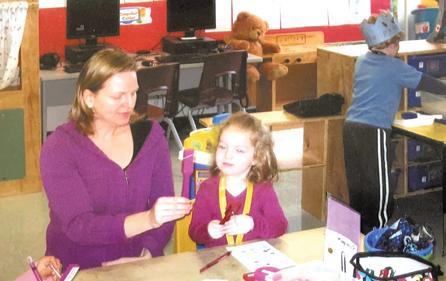
A smile has the power to open doors, build confidence, and create connection. Yet for children born with cleft lip or cleft palate, something as simple as a smile can feel impossibly out of reach. Every three minutes, a child somewhere in the world is born with a cleft condition. Without timely surgery and ongoing support, these children may face serious challenges with feeding, speaking, hearing, and social acceptance.
In Canada, cleft conditions are usually treated within the first year of life. But in many parts of the world, children grow up without access to the care they need. Some families travel days across rough terrain to reach a hospital, only to be turned away. Others never make the journey at all. is reality is why Operation Smile exists—because surgery is essential healthcare.
BRINGING
Operation Smile works in more than 37 countries, creating access to safe, high-quality cleft care. eir approach goes far beyond surgery. From nutrition support for infants struggling to feed,
doesn’t need to be an engineer to be a pilot. But she wants to be. That confidence and wonder for STEM began in her Grade 2 classroom and continued with every Scientists in School workshop she experienced through Grade 8.
“I chose this path because I love the skies.”
CREATING NEW YOUNG SCIENTISTS EVERY DAY
More than a decade since she was in Grade 2, Scientists in School continues to reach young learners at the very same school Maddie attended. is spring, a Grade 4
teacher at the school had this to say about the workshop she and her class participated in: “Our scientist was wonderful with the students—engaging, funny, and let them discover. anks for the great workshop!”
Scientists in School strives to reach every young learner in Canada. The organization brings scientist presenters, hands-on materials and equipment, and curriculum-aligned investigations to every workshop.
Last year, nearly half of the 14,000 workshops delivered across all provinces and territories took place in marginalized

and under-resourced communities, reaching classrooms with limited budgets with life-changing experiences.
YOU CAN LAUNCH A SCIENTIST’S FUTURE Scientists in School envisions a Canada where every child is actively engaged in STEM learning. By fostering curiosity and confidence, they are shaping the innovators and problem-solvers of tomorrow.
You can help make this vision a reality. Donate at scientistsinschool.ca

to speech therapy, dental services, and psychosocial support, Operation Smile ensures children receive the care they need at every stage of life. e collaborative approach is powered by joint education exchanges. By investing in education and resources, Operation Smile strengthens health systems for access to care closer to home.
e result is a growing global network of hospitals and professionals ready to treat children with compassion and excellence.
CANADIANS AT THE CORE OF DELIVERING HOPE
Canadian donors, volunteers, and medical experts play a critical role in this global effort. eir contributions fund surgeries, and

extensive, comprehensive care initiatives, ensuring that no child is left behind because of where they were born. Each gift of time or support helps bring life-changing treatment within reach for children who might otherwise go untreated.
Every act of generosity, big or small, fuels this mission. Whether it’s a surgeon offering their skills, a volunteer supporting families through recovery, or a donor contributing to make their work possible, it takes many hands working together to create brighter futures.
CELEBRATING WORLD SMILE DAY
This October 3, World Smile Day is more than a date on the calendar, it’s a celebration of lives transformed. It honours the smiles already made possible and shines a light on the children still waiting.
For Operation Smile, it’s a reminder of what’s possible when communities come together in hope.
Behind each smile is a story of resilience and love. e moment a parent sees their child’s new smile is unforgettable, matched only by the joy when that child sees themselves in the mirror. ese
moments are only possible because people across the world choose to make a difference.
ere are an estimated five million people living with untreated cleft conditions globally. e need is urgent, and the solution is within reach. With continued support, Operation Smile is working toward a future where every child can access safe, timely surgery and comprehensive care. A smile is more than an expression, it’s a chance at health, confidence, and a brighter future. On World Smile Day and beyond, each of us has the opportunity to be part of this life-changing work. Visit operationsmile.ca to discover how you can help restore confidence and health. Together, we can make change possible—one surgery, one child, one transformation at a time.



When you serve on your condominium board, you’re making important decisions that impact your entire community. It’s a difficult position to be in, but the way to make it easier is simple—a partnership with a trusted and experienced condominium management company.
When choosing the company that will help maintain your condominium and make it a desirable place to live, there is a common misconception that choosing a large company means your community is just another number. In the eyes of many boards, working with a larger management company means not receiving personalized service, being partnered with an unresponsive management team, and simply not being a priority.
At FirstService Residential, we prove this isn’t the case. In fact, working with the largest property management company in Ontario has countless benefits.
CANADIAN-FOUNDED, LOCALLY BASED
While we are a North Americanwide company, we are owned and operated by FirstService Corporation, a proudly Canadian company.
e support our Ontario communities receive is locally based. Each of our condominium managers is supported by a regional director, vice presidents, president, and administrative team that all work out of our local Mississauga or Toronto offi ces. ese professionals provide strategic guidance and handle the administrative needs of our condominium managers.
Many of our associates are
actively involved in the condominium industry, attending important industry events and holding positions on association boards, including CCI Toronto.
is allows us to deepen our understanding of what is taking place in the industry, see emerging trends, and help our boards with community improvements that will help maintain property values and a high occupancy rate. Our local expertise again comes into play when it comes to navigating local legislation and seemingly impromptu changes that can impact your condominium corporation. When you work with us, you can rest assured you’re partnered with a management company that keeps on top of all legislation changes. When this happens, we are quick to act with clear communication to our boards that outlines the changes and what they mean for the community. We then assist our boards in navigating those changes to ensure all the communities we serve are compliant.
Designed to bridge the gap between condominium management and third-party service providers, we are the only management company in Ontario that offers an integrated management model that aligns a condominium’s onsite staff with the condominium manager. In creating one cohesive team, we can significantly enhance the operational efficiency of a condominium corporation.
Working as one team, where a condominium manager and on-site staff are colleagues, further fosters a team environment with a shared goal of excellent service. Together, they work towards this goal through best practices and standard operating procedures. Further strengthening the management of a condominium with a clear reporting structure and comprehensive management oversight.
While our local service structure provides that small company feel, our size provides an unmatched depth of resources. Our local team benefits from the knowledge of over 19,000 associates and 8,500 communities across Canada and the U.S. Meaning, if your community faces an issue that requires specific expertise your local team doesn’t have, they can quickly fi nd insights from our own experts and leaders found serving communities across North America.
Additionally, our communities further benefit from the expertise of our affiliate companies. For example, condominiums managed by us gain access to FirstService Energy. Our trusted energy advisor can work with communities to find customized and cost-effective solutions to boost efficiency and reduce energy consumption.
ese days, the cost of maintaining a large condominium community only seems to increase. So, access to a company like FirstService Energy, who will work closely with your board to
find sustainable energy solutions and identify local incentive programs that can save your condominium money, will benefit your community for years to come.
We recognize that a big part of board business is vendor management, as it takes several third-party service providers for a community to run smoothly. Whether it’s an elevator that needs to be repaired, snow removal, or landscaping, your board needs to find dependable vendors they can trust to get the job done in a timely manner and on budget.
Our size permits us to do the vetting of potential vendors for our board members and allows us to provide a comprehensive list of preferred local vendors that can service your community.
ALWAYS INNOVATING Residential communities are always changing, and their partner in condominium management needs to flex and evolve with them. The makeup, needs, goals, and challenges of a community are ever evolving. And solutions that once worked can quickly become ineffective. We understand. That’s why we are always looking for innovative ways to solve the everyday complexities of community living.
Our size, scope, and experience allow us to invest in the industry and help create condominium management solutions that benefit everyone, from the residents to the board members and even the property managers. For instance, residents often have questions about aspects of dayto-day condominium living. Responding to these often-duplicate questions takes important time
away from the manager’s focus on executing board directives.
Understandably, residents don’t want to wait days for an answer to a simple question, so to meet this need, Resident Support Services (RSS) was created. For our communities that don’t have an on-site property manager, they now have access to a team of professionals that can quickly and efficiently answer resident inquiries. Often providing an answer within the same day. e first of its kind, RSS is a game changer for residents, board members, and property managers alike.
“At FirstService Residential, our mission has always been to deliver exceptional service and solutions that enhance the value of every property and the life of every resident,” said Mark D. Hopkins, President of FirstService Residential Ontario.
“However, we think it goes deeper than that. We aim to build lasting, trusting relationships with the boards we serve. We work hard to create a warm and welcoming atmosphere for the residents and guests of the communities we manage. But above all else, we aim to provide the type of support board members require, so they can spend less time worrying about the day-to-day operations of their condominium, and more time enjoying all that their community and greater neighbourhood has to offer. Allow us the opportunity to prove that our size isn’t a weakness, it’s a strength. Let us show you how the support we can provide will benefit your community.”


Buying a car is one of the biggest financial decisions most of us will ever make. It can be exciting, but it can also feel overwhelming. at’s why the Ontario Motor Vehicle Industry Council (OMVIC) exists. As Ontario’s vehicle sales regulator, OMVIC works behind the scenes to make sure the marketplace is fair, transparent, and safe. With oversight of more than 8,000 dealerships and 30,000 salespeople, OMVIC’s mission is to protect consumers while ensuring dealers operate with professionalism and integrity.
When you walk into a dealership, it’s important to know whether it’s registered with OMVIC. Registered dealers are legally required to follow the Motor Vehicle Dealers Act, which means they must be honest in their advertising, provide clear disclosures about a vehicle’s history, and use contracts that meet strict legal standards.
One of the biggest advantages
of buying from a registered dealer is that you have access to the Motor Vehicle Dealers Compensation Fund (MVDCF). is fund serves as a safety net for consumers, offering compensation of up to $45,000 if a buyer suffers a financial loss related to a purchase, lease, or consignment from a registered dealer. Funded entirely by Ontario’s dealers, the
MVDCF helps maintain a safe marketplace by offering peace of mind that simply doesn’t exist with private sales.
Car buying isn’t just about choosing the right make or model; it’s about understanding your rights before you sign anything. In Ontario, there’s no cooling-off period when it comes to vehicle purchases. Once you’ve signed the contract, the deal is final. at’s why it’s so important to pause, read the bill of sale carefully, and make sure all disclosures are in writing.

If you’re unsure about something, OMVIC is there to help.
eir Complaints & Inquiries team can answer questions, while online resources guide buyers through everything from decoding dealer ads to spotting illegal sellers. By taking a little extra time to learn your rights, you can avoid the kind of costly mistakes that too often come with rushed decisions.
PROTECTING CONSUMERS BEYOND THE SHOWROOM
Consumer protection doesn’t stop at education. OMVIC also enforces the law, ensuring that dealers and salespeople who break the rules are held accountable. A major focus of this work is curbsiders—unregistered, illegal sellers who pose as private individuals but
are often selling multiple vehicles without disclosing important facts. Curbsiders frequently misrepresent cars, sometimes hiding accident damage or rolling back odometers. In 2024 alone, OMVIC laid more than 1,200 charges against curbsiders, sending a clear message that illegal activity will not be tolerated. ese enforcement efforts safeguard not only individual buyers but also the integrity of Ontario’s entire motor vehicle marketplace.
Buying a car should be exciting, not stressful. By choosing an OMVIC registered dealer, you protect yourself with clear rights, professional oversight, and access to the MVDCF if something goes wrong. Whether you’re buying your first vehicle or upgrading to your dream car, OMVIC puts you in the driver’s seat.
Purchase your vehicle with confidence. Visit omvic.ca/buying for resources, and tips that will help you make an informed choice.
‘Tis the season for winter road trips filled with snowy landscapes and crisp, cool air. Whether you’re heading out to enjoy the wintry outdoors or relax in a cozy cabin, the roads are calling!
However, winter also comes with a specific set of hazards that all road-tripping travellers should keep in mind for a relaxing winter drive. Equip yourself with these essential tips for your next cold-weather drive, and discover how Tires can be your trusted companion on the road.
1. CHECK YOUR CAR Winter can be hard on your car, so making sure it’s up to the task of a winter drive is crucial. Start by topping up your windshield wiper fluid with a formula designed for winter. is will help keep your windshield clear of snow, ice, and road salt. A snow brush is another must-have tool to ensure safety and visibility before you hit the road. Most importantly, when temperatures drop, it’s time to switch out your regular tires for winter ones.
designed to provide better grip on snowy and icy roads, giving you increased control and safety. Sailun’s winter tire line-up, including the Ice Blazer WSTX, is engineered to excel in Canadian winter conditions. With features like V-shaped treads that reduce sliding and a unique rubber compound that stays flexible in cold temperatures, these tires ensure you’re ready for
to the waxy surface of the leaves, leading to a loss of traction. Sailun’s winter tires, including the WST2 and WSL2, are designed to provide maximum traction in slippery conditions. ese tires feature diagonal siping for better stability when braking and turning, ensuring that you maintain control, even when the roads are slick. Whether you’re



to be prepared for emergencies. An emergency car kit should include a first aid kit, blankets, jumper cables, and a basic tool kit. Adding road trip snacks can also keep spirits high if you find yourself stuck or delayed. With a well-prepared kit and the right tires, you’ll have peace of mind
Whether you’re driving through snowy mountains or icy city streets, Sailun has the right tire
your next winter road trip is as


Find a UCDA Dealer Near You and look for the UCDA Sign before you Sign
ucda.ca

UCDA members follow a Code of Ethics, provide full vehicle history disclosure, and offer consumer protection you won’t find in private sales.
For most Ontarians, buying a vehicle is one of the largest and most important purchases they will make. e used vehicle market
offers value, but it can also pose risks if consumers don’t know who they’re dealing with. at’s why the Used Car Dealers Association of Ontario (UCDA) has been a trusted name for over 40 years.
A LONGSTANDING COMMITMENT TO ONTARIO DRIVERS
Founded in 1984, the UCDA works to make Ontario’s used vehicle marketplace fair and transparent. Today, the association has thousands of registered motor vehicle dealers located in more than 500 communities across Ontario.
From cities to small towns, UCDA members are part of the local community serving families, businesses, and individuals.
Beyond their role in the automotive industry, UCDA members are also proud supporters of the fight against childhood cancer, demonstrating their commitment to giving back and making a positive difference in the lives of Ontarians.

Ontario consumers are the best-protected buyers in Canada. Ontario regulations and consumer protections are the strongest in the nation, and UCDA members go even further. UCDA members follow a strict Code of Ethics that requires honest advertising, full disclosure of vehicle history, and fair dealing in every transaction. is ensures that buyers know the true story of the vehicle they are considering—including previous accidents.
Unlike private sales, or sales by
illegal sellers called “curbsiders”, where consumer recourse is limited, buying from a UCDA dealer comes with safeguards that protect both your financial investment and your peace of mind.
One of the most valuable services offered by the UCDA is free mediation for consumers. If a dispute arises between a customer and a dealer, the association can help mediate the matter quickly and fairly. is impartial support means buyers aren’t left to fight
battles on their own. e UCDA offers this service even if the dealer is not a member.
Resolving problems supports the goal of putting consumers first and ensuring that the car-buying experience remains as smooth and stress-free as possible. It emphasizes the reason consumers buy from a dealer; the after-sale commitment.
All UCDA member dealers are registered with the province of Ontario and contribute to the Motor Vehicle Dealers
Compensation Fund. is fund safeguards consumers against financial losses resulting from dealer bankruptcy, misrepresentation, unpaid liens, issues related to odometer fraud, and undisclosed accident histories—protections that are simply not available when purchasing a vehicle privately.
LOOK FOR THE UCDA SIGN BEFORE YOU SIGN!
When Ontarians choose to buy from a UCDA member dealer, they aren’t just buying a vehicle—they’re buying with confidence, protection, and peace of mind.
In today’s marketplace, where trust matters more than ever, choosing a UCDA member is the smartest way to drive forward with confidence.
The UCDA website ( ucda.ca ) contains a wealth of resources, including a buyer’s checklist, answers to questions, video tips, a UCDA blog, a free mediation program, helpful advice, and links to member dealers in your community.
A wolf’s astonishing journey has become the catalyst for more than 30 years of conservation collaboration between Canada and the U.S.
In 1991, a wolf named Pluie was fitted with a satellite collar near Alberta’s Banff National Park. Over two years, she roamed 100,000 square kilometres, crossing three U.S. states and two Canadian provinces. Her epic journey stunned researchers and revealed a critical truth: wildlife needs vast, connected landscapes to thrive.
FROM ISLANDS TO CORRIDORS
Pluie’s path highlighted the limits of isolated parks and reserves. Wolves, grizzlies, caribou, and other species don’t recognize political boundaries—they need space to den, feed, and find mates to ensure genetic diversity. True conservation requires corridors that link protected areas into larger, functioning ecosystems.
A VISION FOR CONNECTION
At the same time, environmental lawyer Harvey Locke was rethinking what conservation could be. On a wilderness trip in northern British Columbia, he sketched a bold idea: link Yellowstone National Park to
Canada’s Yukon along the spine of the Rockies. is 3,400-kilometre pathway would be one of the world’s last great wilderness corridors. His vision became the Yellowstone to Yukon Conservation Initiative (Y2Y).
By December of that year, Locke had convened 30 scientists and conservationists from both sides of the border to discuss how to give nature the space it needs to flourish naturally.
A BOLD IDEA TESTED
In its early days, many doubted the scale of Locke’s dream. To prove it possible, Y2Y supported wildlife biologist Karsten Heuer in walking the entire region with his dog, Webster.
Over 18 months, he logged grizzly bear signs along 85 per cent of the route—proof that the landscape was still ecologically intact. Heuer later became Y2Y’s president, committed to protecting what he had walked.
THREE DECADES OF IMPACT
Now in its 31st year, Y2Y is a
global model for landscapescale conservation. By blending Indigenous knowledge with western science, it works to protect nature at the scale Pluie showed was necessary.
Research from 2021 shows protected areas within the Y2Y region have expanded by more than 80 per cent. ese include Indigenous-led areas in British Columbia, the Northwest Territories, and the Yukon; wilderness zones in the U.S.; and a new park in southern Alberta. e average size of protected areas has grown by 56 per cent, and at least a quarter of the region is now under Indigenous stewardship.
Beyond land protections, Y2Y has championed wildlife crossings—177 exist today, with 50 more planned. It has helped conserve more than 500,000 acres of private land, restored key habitats, and supported communities in coexisting with wildlife.
ese efforts are paying off. In Montana’s Cabinet Yaak, the grizzly bear population has grown from 10 in 1990 to around 60 today. Bears near the Canada-U.S. border are
now close to reconnecting with long-isolated Yellowstone grizzlies, strengthening genetic diversity. Meanwhile, in British Columbia’s Peace River region, Indigenous leadership has helped the Klinse-za caribou herd rebound from just 38 animals in 2013 to nearly 200 today.
INSPIRING A MOVEMENT
At the end of 2022 in Montréal, 196 countries, including Canada, adopted the Global Biodiversity Framework, committing to protect 30 per cent of lands and waters by 2030. Y2Y is proud to contribute to this global “30x30” goal through its ongoing work across the Yellowstone to Yukon region.

“We see a future where wildlife crossings are normal, where coexistence measures are part of planning, and where the notion of land existing first for nature is widely accepted,” says Jodi Hilty, Ph.D., Y2Y’s President and Chief Scientist. By 2055, nearly half of the Yellowstone to Yukon region could be protected, creating robust connectivity that helps halt and reverse biodiversity loss.
A recent study confirmed that the Rocky Mountains remain the most ecologically intact mountain range on Earth. Y2Y’s mission is to keep it that way—with the support of more than 700 partners and thousands of advocates in 84 countries. irty years after Pluie’s journey, the Yellowstone to Yukon vision has grown into a powerful international movement. And the work is only beginning.
Learn more at Y2Y.net/vision
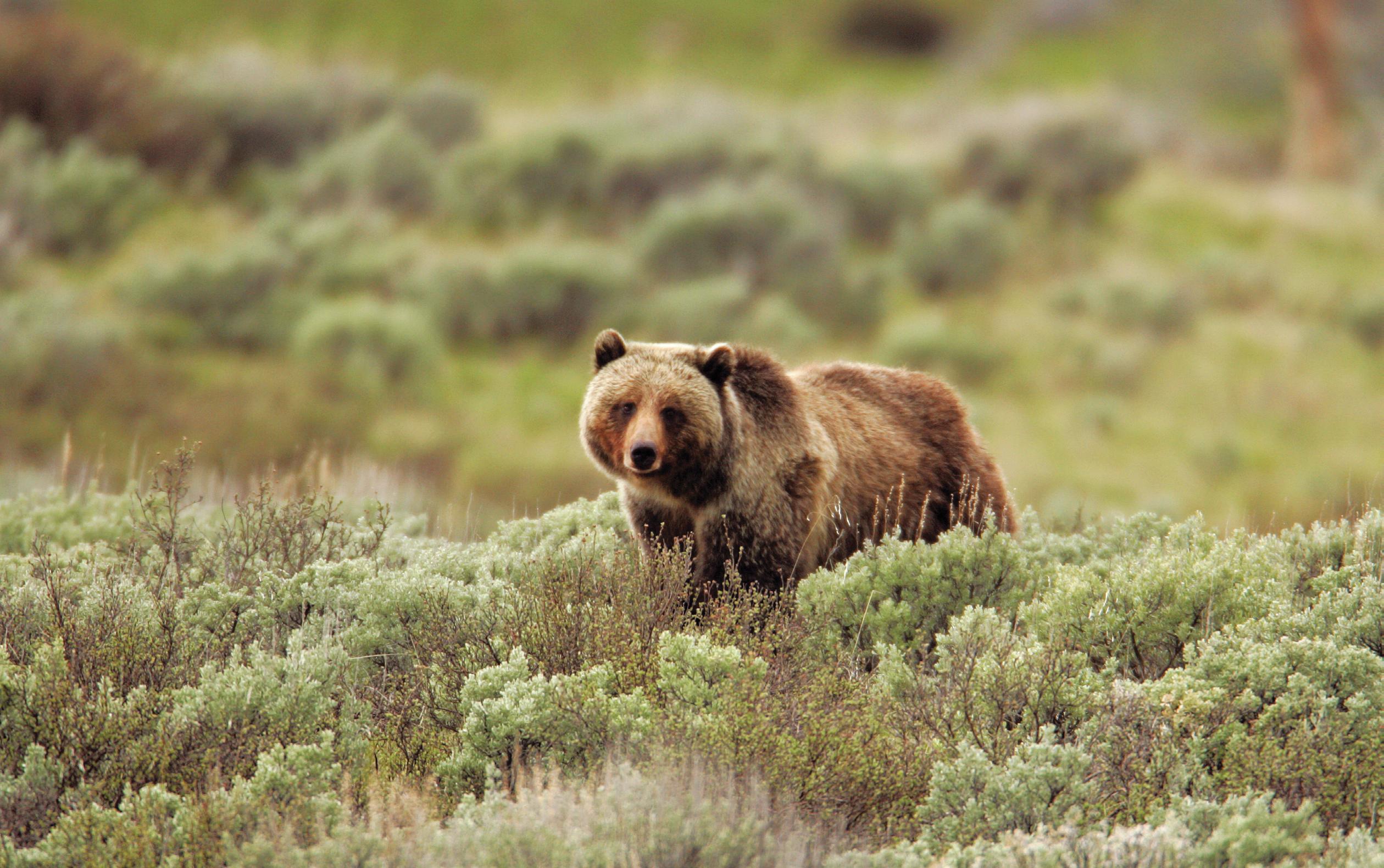



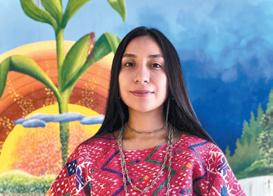
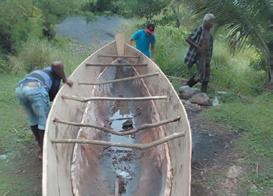
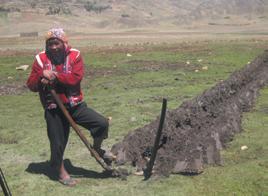
Plenty Canada, a rural community-based non-governmental organization, was formed in 1976 in response to an earthquake that devastated Mayan communities in Guatemala. Combining sustainable technologies with Indigenous knowledge, its volunteers helped reconstruct more than 1,400 homes, as well as a dozen schools and clinics, while ensuring that Indigenous concerns and protocols were communicated to international agencies.
From its earliest years, Plenty Canada gained recognition for innovation in the field of international development. Its approach blended science with the humanities to design programs that met the unique needs of its partners.
Among its pioneering efforts, the organization was one of the first to use solar photovoltaic panels to power remote facilities in the mountains of Lesotho, Africa, in 1981. In 1985, it improved nutritional health for thousands of Sri Lankans by introducing soya protein into traditional diets. By 1991, it was leading reconstruction and rehabilitation support for Miskito, Sumu, and Rama communities whose lives and homes had been destroyed during the Contra War, an episode of history that remains tragically ignored by the world.
INDIGENOUS LEADERSHIP
In the early 1990s, under the leadership of Executive Director Larry McDermott (Algonquin), Plenty Canada began to shift its focus toward working predominantly with Indigenous peoples. is transition was challenging, often facing internal and external resistance, but it was proactive, intentional, and ultimately transformative. Today, as the
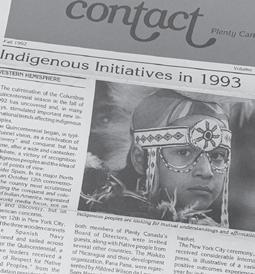
organization enters its 50th year, it celebrates that decision as one rooted in vision and guided by a deep call to justice for Indigenous communities.
Long before the United Nations Declaration on the Rights of Indigenous Peoples was ratified in 2007 (and before Canada’s late adoption in 2016), Plenty Canada had already committed itself to Indigenous rights and self-determination.
As an Indigenous-led organization, Plenty Canada operates from the understanding that humans are one species among many, bound by natural law to care for our children and to consider our responsibilities to the next seven generations. Its mission is to advance cultural revitalization and build capacity within communities, strengthening both cultural and economic self-determination.
INTERNATIONAL PARTNERSHIPS
While most of its initiatives now focus on Canada, Plenty Canada continues to support Indigenous peoples internationally, extending its work across regions and cultures.
MAYA GUATEMALA
In Guatemala, Plenty Canada partners with Maya-Guatemala
to support people who uphold cultural values and traditional knowledge. Dozens of Elder women from the Maya Q’eqchi’ nation, master weavers, are working alongside younger women to safeguard ancestral skills. “We are uniting in defense of our beliefs and values that root us in our Mother Earth, the Mountains, and even the cosmos,” explained project director Maria Leonor Teni de Leon (Maya-Q’eqchi’).
ANDEAN MOUNTAINS
Near Cuzco, the heart of Indigenous Peru, Plenty Canada partners with a Quechua ancestral community known for its leadership and traditional knowledge. is community of llama herders and potato farmers, also master weavers and artisans, guides a valley of communities within the famed Potato Park of the Andes, helping preserve biodiversity and cultural heritage.
CARIBBEAN INDIGENOUS
Through the “Caribbean Indigeneity—Values and Knowledge” program, Plenty Canada partners with Tainoguajiro Indigenous families in eastern Cuba. Living in remote mountain and coastal regions, these communities
are led by a traditional cacique (chief), women elders, and emerging youth leaders. Long marginalized and even declared “extinct” in offi cial histories, Cuba’s Indigenous peoples have long “hidden in plain sight,” and are now re-emerging as extended Native communities of related families.
CARIB COMMUNITY
In Dominica, Plenty Canada supports Kaligano (Carib) partners who are revitalizing the traditional art of canoe making. Expert fishermen and elders mentor youth in a practice that is more than craft: it is ceremony, livelihood, and culture. From the ceremonial selection and cutting of trees to carving, firing, and cooling, each step shares cultural values and technical skill. Elders are confident, youth are enthusiastic, and a new generation is learning to shape seaworthy vessels.
GOOD MIND GRAPPLING
Closer to home, national Canadian champions Phillip and omas Barreiro, twin wrestlers from Akwesasne Mohawk Reservation, use the Art of Grappling to promote self-esteem and mutual empathy among First Nations youth in several communities.






Plenty Canada’s headquarters, the Plenty Canada CampUs, is located on Algonquin territory near Lanark, Ontario. For more than four decades, the site has served as a vital gathering place for cross-cultural work.
In recent years, with support from the Federal Economic Development Agency for Southern Ontario and Employment and Social Development Canada, and in consultation with renowned Indigenous architect Douglas Cardinal, the headquarters has undergone a green transformation. Renovations include sustainable windows, insulation, and siding; advanced heating and water systems; expanded classrooms and lodging facilities; improved accessibility; and solar energy systems that generate more power than the CampUs consumes, making it proudly net energy positive.
What’s more, this support has helped transform the space into a land-based learning centre where the next generation will continue to explore, protect, and share Indigenous knowledge.
Discover how Indigenous-led solutions are shaping resilience worldwide and get involved today at plentycanada.com

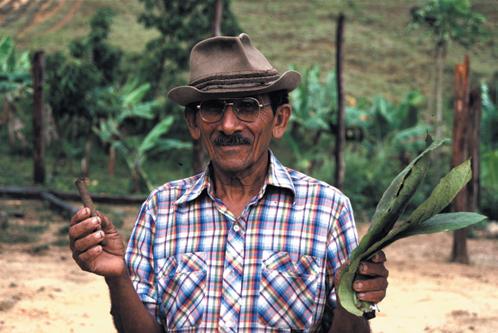
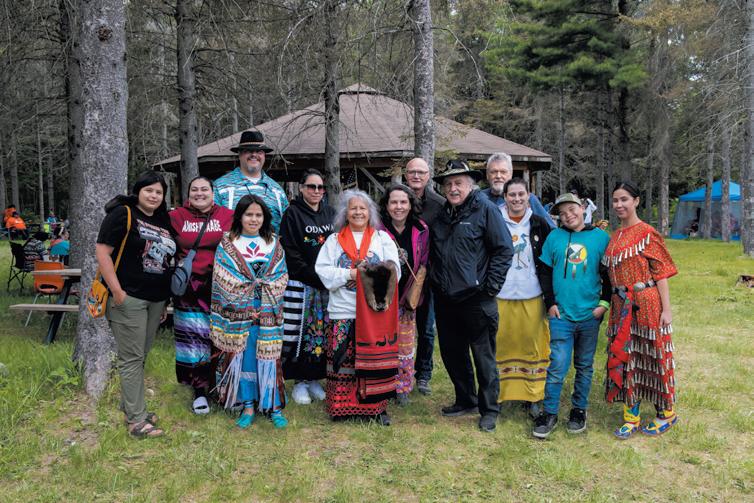
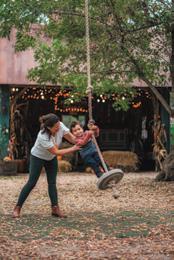
Farms, festivals, food & fun.
© Images: Dudek Photography for Ontario’s Southwest, and Tourism London

Your autumn adventures start here.

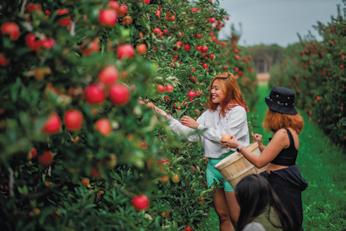
londontourism.ca
e weather may be cooling down, but London is still red hot when it comes to fall events in the Forest City, and the seasonal fun is just beginning. Get road trip ready with our handy list of the top upcoming events and attractions.
FUN, FARMS & FOLIAGE
Experience the magic of 10,000+ glowing pumpkins as Pumpkins After Dark (Oct. 3-Nov. 1) takes over Storybook Gardens. Discover monster mazes, live pumpkin carving, costumes, fall treats and photo ops. It's fun for the whole family—no jump scares here!
From apple picking to pumpkin patches, nearby farms offer fun for all ages. Explore towering corn mazes, pick your own produce and take seasonal snaps at local farms near London like Kustermans Adventure Farm, Apple Land Station, Great Lakes Farms, or Clovermead Adventure Farm.
No matter where you are in the city, a park or hiking trail is just around the corner. Get some fresh air, step on the crunchy leaves and discover trails like Sifton Bog, Fanshawe Conservation
Area and Westminster Ponds at their prettiest.
FALL FOOD & FLAVOURS
The harvest is here in London!
Plan an afternoon exploring the city’s favourite farmers’ markets like Covent Garden Market and The Market at Western Fair District to find fresh produce and charming gifts. After working up an appetite, discover the city’s diverse dining scene. London has many family-friendly spots like Palasad SocialBowl, Los Lobos, and rough ick & in Pizza.
Looking to treat yourself to some fine dining? Check out local favourites like ANNDining, Craft Farmacy, and Blackfriars Bistro. Sip, sip, hooray! London and its surrounding area are also home to fantastic breweries, distilleries and wineries. Visit them or stop in at one of London's many taprooms to kick back with a cold pint.
LIGHTS, MUSIC, ACTION
Enjoy high-energy concerts all autumn long in Canada’s UNESCO City of Music. Multi-day music festival
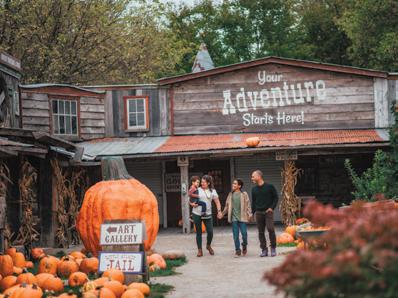
VENUExVENUE (Nov. 6-8)
sweeps through the city, uniting 50+ emerging talents across iconic venues. London Music Hall and Canada Life Place come alive with sensational touring acts, plus don’t overlook electrifying performances at London's more intimate music venues.
e 10th Annual Forest City Film Festival (Oct. 24-Nov. 2) rolls out the red carpet for its biggest and boldest year yet with 60+ screenings and events. e Grand eatre’s new season gets underway with e Play at Goes Wrong (Oct. 14-Nov. 1), a

whodunit with a spiralling series of absurd mishaps and guaranteed to deliver non-stop laughter. Even more humour can be found at London's Sorry! Comedy Fest (Nov. 3-8), featuring topnotch comedians like Tom Green, Demetri Martin, Sophie Buddle, and Ali Macofsky, who headline hilarious shows.
Fall is a great time to be a sports lover in London. The puck has dropped at Canada Life Place, and the hockey season is in full swing for the London Knights, back-to-back OHL Champions. is fall, London also plays host to the 2025 Canadian Cross Country Championships (Nov. 29-30), including national championship races and the Canadian Cross Country Classic 5K, which welcomes runners of all ages to challenge themselves on the championship course.
You don’t have to go far to find the perfect autumn activity in London, Ontario! For a full list of fall events, visit londontourism.ca
What’s more tiring: skiing or hearing about skiing? Your partner has been bragging about Kootenay winters for years: “Last year it snowed 80 centimetres the week I went to Whitewater!” Enough already.
Now she’s raving about how the mountain kept its grassroots vibe even after adding a new lift in 2023, boosting the terrain to 3,247 acres where she never crosses a track until noon on a powder day.
And that was before she got into cat-skiing. Then heli-skiing. Then ski touring. Apparently, there are more backcountry operations around Kootenay Lake than anywhere else in the world, and the terrain is “unmatched.” Great. So what’s left for those of us who prefer not strapping planks to our feet?
Plenty, it turns out! Ever been to Ainsworth Hot Springs? It’s a natural delight whose rejuvenating waters work magic to peel back bigcity stresses. Or you can go even deeper at an Ashram, in true Kootenay fashion.
EAT, DRINK, REPEAT
If your idea of après is a pint and a plate, you’re in luck: three breweries in Nelson and another in Kaslo keep the taps flowing. Nelson also punches well above its weight in food, boasting more restaurants per capita than Vancouver, San Francisco, or Manhattan. In just four ornate city blocks, you can find everything from artisan wood-fired pizza to global fusion. A walking tour likewise feels
especially storybook in winter, highlighted by centennial Victorian architecture and dozens of curated murals. Getting around on foot is quick and quaint, offering time to escape into one of many independent bookstores or dozens of cafés, many of which roast their own beans and are award winners. Locals joke they have coffee for blood, and one sip proves the point. Art’s also on tap all winter
long at the Oxygen Art Centre, as well as a plethora of galleries and artisan studios. e Nelson Museum, Archives & Gallery will take you back to the frontier years, as will a visit to the SS. Moyie Sternwheeler up in Kaslo: the oldest intact vessel of its kind in the world. Kaslo’s Langham Cultural Centre showcases contemporary and traditional exhibits as well, a cosmopolitan amenity in an impossibly cute

village framed by snowcapped peaks and a placid lake.
NIGHTS THAT NEVER COOL DOWN
Back in Nelson, there are always shows at the Capitol eatre featuring local and national talent performing dance, theatre, and musicals. Music, by the way, pulses winterlong at venues like Bloom Nightclub and Spiritbar; Nelson is a sleeper hub for electronic artists worldwide.
But if you prefer to keep it simple, there are, of course, plenty of pubs, as well as the Canadian staple of the good old hockey game. e Nelson Leafs are a Junior A championship team that seldom disappoints. It is an elbows-up kind of moment, after all, and supporting the home team has new meaning these days, even when it comes to picking a getaway. Not everybody loves sliding on snow, but everybody loves winning. Visit Nelson and Kootenay Lake, and it’s bragging rights for all.
Book your trip today at nelsonkootenaylake.com
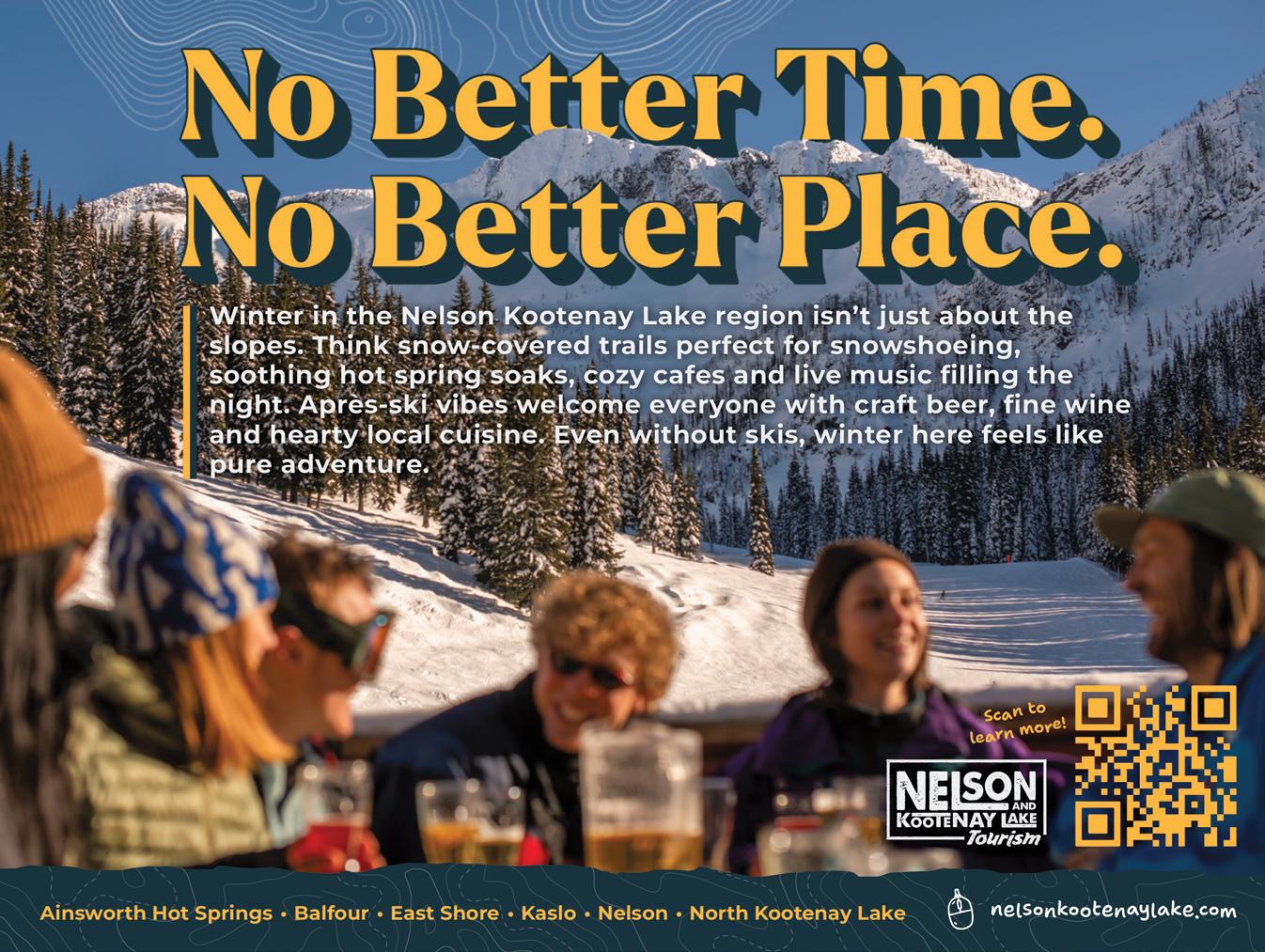

Just a short drive west from the GTA, the shores of Lake Huron in Sarnia-Lambton are calling with a perfect blend of relaxation, adventure, and flavour. If you’ve been looking for the ultimate weekend escape—where you can sip, savour, and explore—plan your getaway along the Cheers to the Coast Drink Trail, a collection of wineries, breweries, cideries, and a meadery that showcase the very best of Sarnia-Lambton.
SIP YOUR WAY THROUGH LOCAL FLAVOURS
Kick off your weekend in the waterfront city of Sarnia, where the craft beer scene is thriving.
Refined Fool Brewing Company is a local favourite, known for its quirky names and bold flavours (try the Van Full of Weirdos IPA if you’re feeling adventurous). Just around the corner, Imperial City Brew House, River Run Brew Co.,

and Point Brewing Company all pour unique brews, each with its own story and atmosphere. With patios overlooking the water, these stops are the perfect way to ease into your weekend.
Wine lovers won’t want to miss Alton Farms Estate Winery, Lambton County’s first winery. Tucked into rolling countryside, it’s a serene stop to sip sustainably crafted reds, whites, and rosés. For a mix of both wine and cider, head to Shale Ridge Estate Winery & Cidery in edford, where guided tastings often come paired with bites of locally inspired food.
Cider fans can continue their journey at Twin Pines Orchards & Cider House, also in edford. is family-run orchard crafts crisp ciders from heritage apples, including their beloved Hammerbent Red. While you’re there, stop in at their farm store for fresh produce, baked goods, and treats—perfect for a picnic by the lake.
Round out your tasting tour at Munro Honey & Meadery in
Alvinston, where Canada’s oldest beverage, mead, gets a modern twist. From refreshing session meads to honey-forward blends, you’ll experience how local beekeeping and sustainability create something truly special.
MORE THAN JUST A TRAIL
e Cheers to the Coast Drink Trail is about more than what’s in your glass—it’s about discovering the natural beauty and culture of Sarnia-Lambton. Spend a sunny afternoon at Canatara Park or stroll along Bright’s Grove Beach, where soft sand and turquoise waters rival tropical escapes. Explore Rock Glen Conservation Area, home to waterfalls and fossil beds, or shop the charming boutiques and galleries in downtown Sarnia. Foodies can round out their tastings with fresh-caught perch at a local restaurant, or dive into farm-to-table dining that celebrates the region’s agricultural roots. Pair your meals with the wines, ciders, and beers you’ve
collected along the trail for the ultimate taste of place.
To make the most of your weekend, book a cozy lakeside cottage, a boutique inn, or one of Sarnia’s modern hotels. Wake up to the sound of waves, enjoy breakfast overlooking the water, and set out for another day of sipping and exploring. With everything from family-friendly accommodations to luxury stays, you’ll find the perfect base for your Sarnia-Lambton adventure.
Whether you’re a craft beer enthusiast, a wine lover, or simply looking for a fresh Ontario getaway, the Cheers to the Coast Drink Trail offers an unforgettable weekend fi lled with fl avour and discovery. Gather your friends, pack your bags, and raise a glass to Sarnia-Lambton.
Plan your trip today at cheerstothecoast.com
It all started when Bob, in his retirement, began sailing up and down the Caribbean islands, and noticed a startling lack of inclusive sailing programs in this large sailing area.
“ e Royal Yachting Association and Sailability had over 200 units across the UK, but none in this part of the world,” he explained.
Frustrated and inspired, he took it into his own hands to change this. With encouragement and support from Elizabeth Jordan— then Commodore of the Antigua Yacht Club and soon to become President and Founder of the National Sailing Academy—and support from the RYA, Bob, his wife Su, and their friend Maureen launched the Sailability program, making Antigua one of the first places in the world (outside the UK) to embrace such an initiative.
It began as a small, grassroots effort, but quickly grew into a community program that serves 80
differently-abled people, empowering children and adults to sail— with plans to double that number. is program works alongside the NSA, which currently has 230 children across 23 schools coming to the Academy each week to learn to sail.
Mornings are dedicated to the Sailability program. Afternoons follow a structured RYA sailing syllabus for schoolchildren aged eight to 18. Weekends and holidays see adults take to the water, often at subsidized or no cost. While sailing is an exciting and unique experience in its own right, the impact of the program extends much further.
“We had a girl come through the school program who had corrective surgery on her feet,” Alison shared. “Her confidence grew so much, her entire family started sailing together.”
From deaf and mute sailors to 66-year-old amputees who navigate the waves independently, the stories from the program have been transformative.
“In the UK, people with

disabilities often have structured care and support,” Bob explained.
“Here in Antigua, that support is limited. When someone comes to our program, it might be the only day of the week they leave the house. It took two years for local officials to acknowledge there even was a disability problem, but our impact has made it clear how much of a difference social inclusion makes.”
For many participants, sailing is a chance for independence and joy in a rare and exciting new field. But the success of the program lies not only in its reach

but in its roots.
“All our instructors are local,” Alison noted. “They started as students in our school program. They’re now teaching the next generation.”
One alum is Jules Mitchell, who trained through the academy, first becoming an instructor, and is now a professional sailor. Another graduate, Junella King, also became an instructor and then joined an all-women’s crew that went on to win a roundthe-world race.
Running a program with this kind of community impact is no
small feat. Tourists, like all community members, are welcome to join in on inclusive sailing adventures, with proceeds directly aiding the program’s impact. e Sailing Academy offers accommodations for visitors and plans to run inclusive sailing week packages, which also helps fund this incredible program. Looking ahead, the NSA are working to ensure that the program’s future is firmly in Antiguan hands, with three of six board members now local, and a pipeline of homegrown instructors and leaders. Plus, there’s more on the horizon. World Sailing, the governing body for sailing, is planning an Inclusive Development Programme & Regatta next year to teach participants from 10 Caribbean islands how to manage a sailability programme—yet another step toward making sailing a space for everyone.
As Bob puts it, “We’re not just teaching people to sail, we’re opening doors that were never there before.”
Collingwood, Ontario, is capturing attention across the province, and one visit is all it takes to understand why. Just a few hours north of Toronto, this charming town is known for its natural beauty and four-season recreation, making it a popular destination for visitors all year round. But what you may not know is that Collingwood is also a hub for entrepreneurial spirit, contributing to an exceptional quality of life—just ask the folks who call it home! With recent survey results
across sectors like technology, tourism, food production, and design. Entrepreneurs are drawn to Collingwood for its supportive ecosystem, collaborative networks, and access to skilled talent.
But Collingwood isn’t just a great place to build a business; it’s also the perfect place to grow personally and with family. e town offers access to schools, safe neighbourhoods, and a strong sense of community. Residents enjoy access to nature, recre-

Collingwood’s economy, with a strong emphasis on four-season experiences. From outdoor recreation to culinary events, the town offers something for everyone. Local businesses benefit from a steady stream of visitors while maintaining a strong sense of identity and community. Adding to this, Collingwood’s investment in infrastructure, sustainability, and smart growth ensures that the community continues to thrive without losing its small-town warmth. It’s a place where entrepreneurs, families, and innovators can all envision a future that balances economic opportunity with
neur looking to launch your next venture, an investor seeking new opportunities, or a family looking for a place to thrive, perience a community where
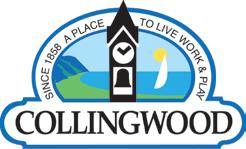

1. TOWNS & VILLAGES
Northumberland County chefs, bakers, shop owners, performers, and artisan makers welcome you to their communities—Port Hope Cobourg, Grafton, Colborne, Brighton, and the Trent Hills communities of Campbellford, Hastings, and Warkworth, among others—for a taste of incredible Ontario hospitality. Northumberland’s historic downtowns feature boutique shops, independent eateries, and beautifully preserved main streets.
2. NATURE
Home to 15 conservation areas, two forests, two provincial parks, over 10 nature reserves, and multiple beaches and waterways, Northumberland is an outdoor lover’s dream. Tackle an aerial course at Treetop Trekking Ganaraska or hike some of its 118 kilometres of trails (including over five kilometres of universal trails designed to minimize barriers to accessibility) for unique views.
3. CYCLING
Road cyclists and mountain bikers can set course for top-ranked signed routes, trails, and connections to the Great Lakes Waterfront Trail and the Ontario Greenbelt Route Northumberland is home to 50+ Bike-Friendly Certified attractions, accommodations, eateries, and bike shops to visit along the way. Visit cycleroutes.ca for information.
4. LARGE LANDMARKS
Check out larger-than-life landmarks like e Big Apple in Colborne, Canada’s giant two-dollar coin and the 91-metre Ranney Gorge Pedestrian Suspension Bridge in Campbellford; a massive 7.9-metre free-standing robot and friends at Primitive Designs in Port Hope; a 3.65-metre walleye named Pisces Pete in Hastings; and the Presqu’ile Point Lighthouse in Brighton.
5. CUTE CREATURES
Connect with alpacas at Old Mill Alpacas, say hello to sweet donkeys at PrimRose Donkey Sanctuary meet a new animal friend and book a vegan farm stay at Promised Land Animal Sanctuary , or sign up for Haute Goat’s Goat Shmurgle, Toodle Tour, or Horse Shnooble experiences.
6. CRAFT BEVERAGES
Sample suds from Church-Key Brewing in Campbellford, Cold Springs Brewery in Cold Springs, Focal Brewing Co. in Hastings, Ganaraska Brewing Company in Port Hope, and Northumberland Hills Brewery in Cobourg. Cider lovers can find their next sips from Colborne’s Dirty Dog Cider Co., the 401 Cider Brewery, or Rice Lake Hard Cider in Baltimore.
7. EXCEPTIONAL EATS
Indulge in award-winning delights from Canada’s Sweetest Bakery Dooher’s in Campbellford. Port Hope’s Olympus Burger consistently appears on top-ten lists in Canada and beyond. Centre and Main Chocolate Co. (Warkworth) and Mercury Chocolates & Gelateria (Cobourg) craft internationally award-winning artisanal chocolate varieties, often featuring local ingredients. Campbellford’s Empire Cheese is known for its variety of Grand Champion cheddars.
8. SPECIALTY SHOPS
From Port Hope ( e Bee Works Gift Shop and Herma’s Fine Foods) to Warkworth ( e Village Pantry ) to Brighton ( Special Effects Lifestyle Boutique and Northumberland Fine Food), and many villages in between, Northumberland’s gourmet food and specialty shops await discerning epicureans.
9. FARM FRESHNESS
Take home a fresh taste of place from seasonal farmers’ markets in Campbellford, Cobourg, Hastings, Port Hope, and Codrington. Prefer fresh-picked? Enjoy pick-yourown fruit, vegetables, and even flowers at local farms. Seasonal goodness is easy to find at farm markets and roadside stands across Northumberland County. Now in season: pumpkin patches and corn mazes. Coming up: tree farms and holiday markets.
10. WATERWAYS If getting out on the water floats your boat, there are multiple marinas accessible from Lake Ontario Rice Lake, and the Trent–Severn Waterway. From canoeing and kayaking to sailing or cruising on
a houseboat, there are many ways to enjoy the waves—and maybe catch a few fish while you’re at it.
11. SENSATIONAL SHOWS
Take in a professional theatre production at Capitol eatre—a National Historic Site and one of the last remaining North American examples of an “atmospheric” theatre space. Visit Victoria Hall in downtown Cobourg and be inspired at the Art Gallery of Northumberland—a cultural hub and the County’s largest collecting public art gallery—exhibiting historical, modern, and contemporary Canadian art. Catch a performance at the Concert Hall at Victoria Hall, which hosts artists from around the world. Connect with nature and creativity at Westben, staging world-class open-air musical performances on a 500-acre farm for over 25 years.
12. GOLFING
Hit the links at one of 11 golf courses—from a historic Scottish links course to Robbie Robinson’s championship fairways. Northumberland’s rolling hills create some of the best golf vistas in Ontario. Fans of disc golf can take on an 18-hole course at Haute Goat Farm in Port Hope, while shorter games await at Cobourg Disc Golf Club or the Brighton KOA (in season).
13. RETREATS
Take time to relax, rejuvenate, and recharge with a wellness getaway. Ste. Anne’s Spa in Grafton offers a multitude of treatments, seasonal outdoor pools, and year-round hydrotherapy experiences. Discover what makes it one of Canada’s most popular destination spas. Cuddle up and relax in your own personal snow globe at Fieldstone Spa, or take a cold plunge then float your cares away at Mindful Meridians (Cobourg). Book a sauna and salt cave session at Shantee Healing (Port Hope). Guests at Fells Meadows (Castleton) can explore 100 acres of peace and serenity, including private nature trails and a labyrinth. Nurture your inner creative and learn a craft such as weaving with natural materials at e Branch Ranch (Warkworth) or Wind & the Willow (Grafton).

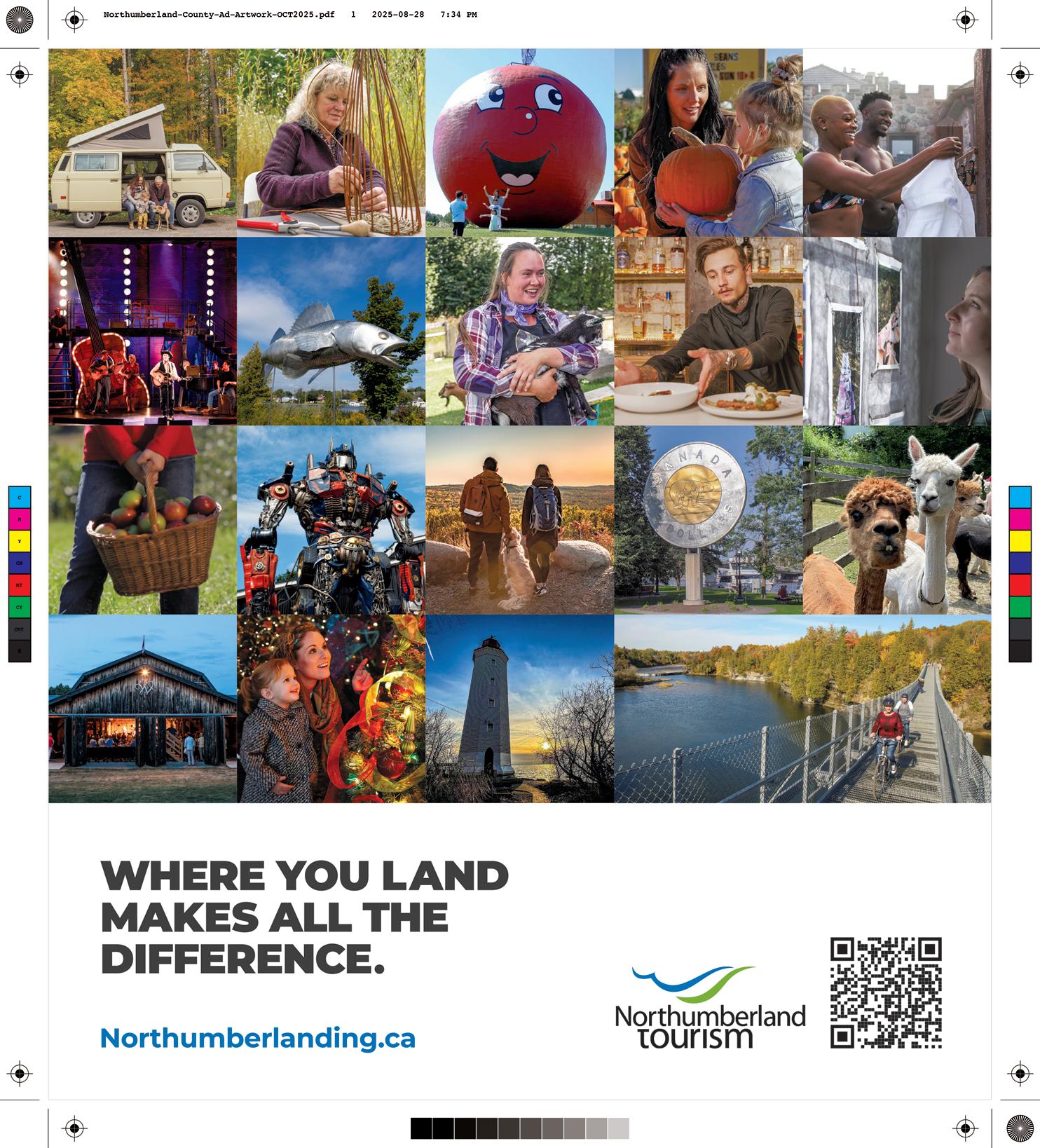



In Carleton Place, every season offers something unforgettable— but fall and winter bring a special kind of magic. Nestled along the scenic Mississippi River in Lanark County—Ontario’s Maple Syrup Capital—this small town blends heritage charm with natural beauty, all just a stone’s throw from Ottawa, just off Highway 7, making it an ideal base for exploring Eastern Ontario.
FALL IN LOVE WITH
CARLETON PLACE
In fall, Lanark County comes alive in rich shades of crimson, gold, and amber. Scenic drives wind through rolling hills, heritage hamlets, and forests ablaze with colour. Cyclists can set out from town along rail trails, riverside paths, and quiet country roads, while those on foot can wander Bridge Street’s heritage storefronts and cozy cafés. Blue Spoon Atelier, Surrounding Memories, and art galleries showcase the gourmet treats, unique gifts, and local art you’ll find throughout Carleton Place—each stop reflecting the town’s creative, small-town character. Time your visit with
the annual PumpkinFest festival, October 3-5, when the streets fill with harvest flavours, live music, and family fun—the perfect way to experience Carleton Place’s warm, welcoming spirit.
HOLIDAY
In winter, Carleton Place transforms into an idyllic holiday town—the kind that has inspired real Hallmark movie productions. Twinkling lights line heritage façades, boutiques brim with oneof-a-kind gifts, and restaurants set the stage for romantic, candlelit evenings. Whether you’re strolling snow-dusted streets or browsing the festive storefronts, you’ll feel like you’ve stepped into a storybook scene. Visit on November 22nd and experience the thrill of WinterFest, a free, family-friendly event for all ages to kick off the holiday season (think roaming carolers and busker entertainers, free horse-drawn wagon rides, and more).
TASTE CARLETON PLACE
Carleton Place serves up flavours as authentic as its history.
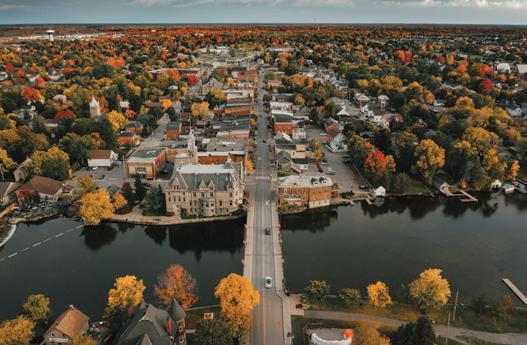
Riverside patios (in warmer months) set the scene for leisurely lunches, while quaint cafés pour locally roasted coffee alongside fresh-baked treats. Seasonal, farm-to-table menus highlight autumn harvests and winter comfort foods, with Black Tartan Kitchen as one of the region’s finest examples. Don’t miss Stalwart Brewing Co. for bold local brews, or Braumeister Brewing Co. for Bavarian-style classics. Every meal—from a quick bite to a lingering dinner—is an invitation to savour the moment.
LEGACY & LEGENDS
For those who value culture, history, and stories that connect them to place, Carleton Place offers an immersive journey into the past. Visit the Carleton Place and Beckwith Heritage Museum or the Canadian Co-Operative Wool Growers—Canada’s largest wool co-operative and a rare living piece of the nation’s agricultural heritage. Follow a self-guided walking tour to uncover tales etched into every corner, from landmarks tied to legendary musician Stompin’ Tom Connors to the Captain Roy
Brown Exhibit, honouring the First World War flying ace credited with downing the Red Baron.
FEEL-GOOD TOURISM
A trip to Carleton Place is more than a getaway—it’s a chance to enjoy the quintessential smalltown Canadian experience while supporting the community you’re exploring. Every dollar spent at a small business in Canada generates 66 cents of local economic impact. Your visit supports artisans, sustains heritage spaces, and keeps the community vibrant. Begin at the Carleton Place Information Centre for maps, bike rentals, insider tips, and to create a personalized itinerary—then explore, shop, and savour knowing your visit helps preserve the people, history, and natural beauty that make this town so special. Plan your trip at visitcarletonplace.ca Information Centre: 170 Bridge Street, Carleton Place | 613-2571976 | tourism@cpchamber.com @carletonplacetourism @carletonplacetourism
ere’s a chill in the air, the leaves are falling, and all signs are pointing to a fall getaway that lets you embrace the season in true art de vivre style. At Ruby Foo’s in Montréal, you don’t have to choose between a cozy respite or a city escape—you can have it all in one memorable stay.
Ruby Foo’s is your gateway to the city’s best. Just a five-minute stroll from Namur metro station and located between the city and the airport, you have a direct connection to downtown Montréal. And when you return, 198 spacious, Asian-inspired rooms and suites welcome you back to recharge.
THE SHOOTING STARS
4-SEASON SKATING RINK
Exclusive to hotel guests, thanks to Tourism Montréal’s support, Ruby Foo’s one-of-a-kind Shooting Stars skating rink lets you lace up in any season. No matter when you visit, bring your skates with you or grab a pair at our front desk. From summer sunsets to crisp winter days and everything in between, the Shooting Stars rink is perfect for families, couples, and even colleagues to bond
and make memories. And while it’s all about fun on the ice, it’s also about protecting the planet. Ruby Foo’s rink’s synthetic surface uses no refrigerants, no water, and no heavy equipment, cutting down on energy use and environmental impact. e surface material is fully recyclable, with the manufacturer integrating post-industrial plastics back into their production process. e space is even illuminated with energy-efficient LED lights, and Ruby Foo’s is
committed to offsetting the energy used during operation.
At Ruby Foo’s, hospitality and environmental stewardship go hand in hand. From eco-friendly Signature rooms featuring locally made biodegradable bath products, to EV charging stations and a coffee-pod recycling program, every detail is thoughtfully designed to reduce the hotel’s environmental footprint. Ruby Foo’s proudly operates a

rooftop urban garden and beehive, supplying fresh produce to their in-hotel team and local organizations. With even more sustainable initiatives in the works, like a rainwater recovery system to help save up to 180,000 litres annually for the pool and garden, a stay at Ruby Foo’s is ideal for the eco-conscious traveller.
Guests can even participate in the hotel’s $5/night donation program to support local causes.
These efforts make a big
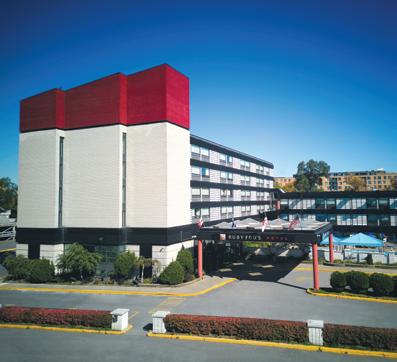
diff erence and play a big part in what makes Ruby Foo’s so special. eir efforts have earned them 5 Green Keys, Biosphere certification, and Rainbow Registration from the Canadian LGBTQ Chamber of Commerce.
THE ART OF LIVING SLOWLY
e same way you’ll feel the hum of the city as soon as you enter Montréal, you’ll feel the art de vivre in the air as soon as you step into Ruby Foo’s lobby. e warmth of lofty ceilings, a crackling fireplace, and a timeless sense of welcome have defined the hotel since it first opened its doors in 1962. With two brand-new on-site restaurants, a fully equipped gym, free parking, and EV charging, Ruby Foo’s ensures your stay is as convenient as it is memorable, allowing you to focus on enjoying your time here.
Whether you’re here for business, leisure, or a spontaneous weekend escape, Ruby Foo’s is ready to welcome you.
Learn more and book today at hotelrubyfoos.com




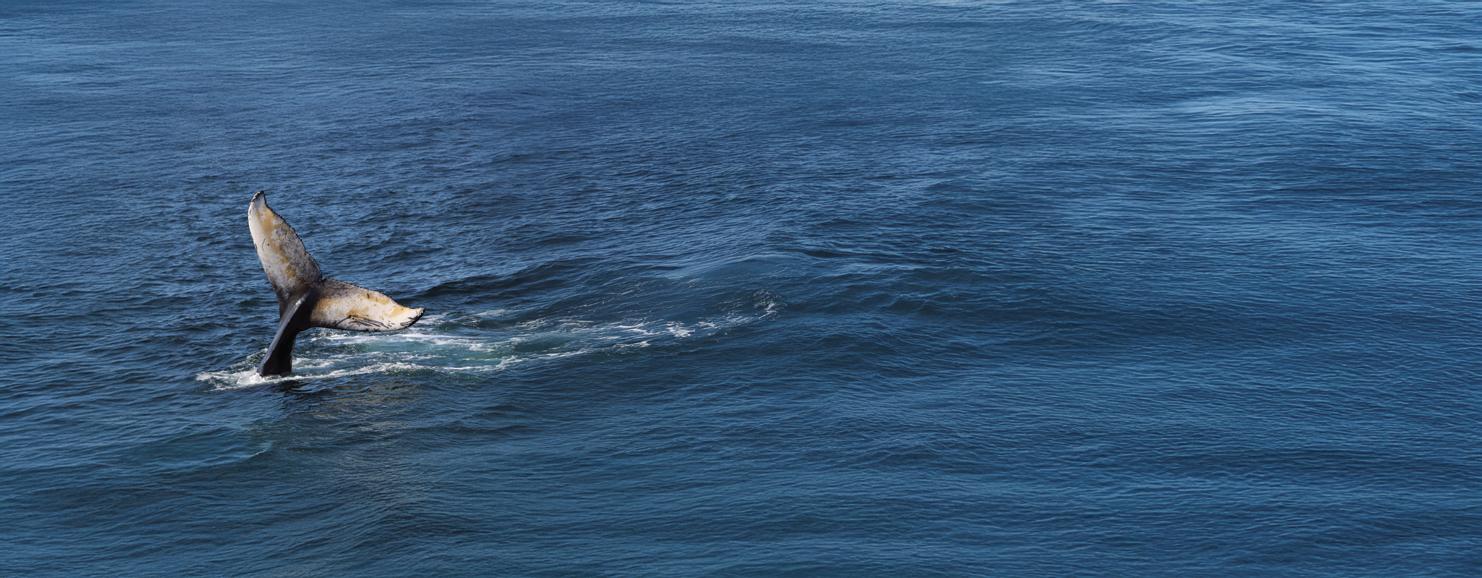
for the breathtaking beauty of the East Coast and its unmistakable charm, from the fresh seafood and coastal views to the warm hospitality and easygoing way of life. Wherever you go, the magic of Atlantic Canada shines through. Yet tucked away is one hidden gem that brings together everything you could ever want in an East Coast adventure, all in one unforgettable place.
INTRODUCING THE 10
WONDERS OF DIGBY, NOVA SCOTIA
1. WORLD-CLASS WHALE WATCHING
e Digby region is one of the premier destinations on the planet to witness whales in their natural habitat. When you set sail on the Bay of Fundy, you’ll find yourself surrounded by playful whales breaching the surface, soaring seabirds, and a vibrant array of marine life, an unforgettable experience that feels as if the ocean itself is welcoming you.
2. THE MAGIC OF MAUD LEWIS
Maud Lewis is one of Canada’s
brated for transforming humble materials into vibrant works of joy. Her paintings have hung in the White House, inspired a Hollywood film, and brought Nova Scotia’s folk art tradition to international attention. Digby is where Maud lived and painted, and it remains the heart of her remarkable story.

3. SCALLOP CAPITAL OF THE WORLD Digby proudly holds this title, and for good reason! Home to the world’s largest scallop fleet, its pristine Bay of Fundy waters produce scallops that are famously large, sweet, and succulent. It’s no wonder they’re considered some of the best you’ll ever taste.
An ecological jewel and designated nature sanctuary, Brier Island is a haven for diverse wildlife and a paradise for birders. As the westernmost tip of Nova Scotia, where the Bay of Fundy meets the Atlantic Ocean, it offers breathtaking landscapes and a sense of wonder you won’t find anywhere else.
5. BEAR RIVER – THE VILLAGE ON STILTS
This picturesque village is unlike any other, with homes and shops built on stilts above a tidal river that rises and falls 26 feet twice each day. Beyond its unique architecture, Bear River is a thriving hub for artists and home to award-winning wineries that reflect the region’s creative spirit.
6. THE BALANCING ROCK
Standing 20 feet tall and weighing over 20 tonnes, this striking basalt column appears to teeter on the edge of Long Island, defying gravity itself. Formed millions of years ago, the Balancing Rock is reached by a scenic trail

that rewards visitors with a truly unforgettable sight.
7. HISTORIC LIGHTHOUSES
With one of the highest concentrations of lighthouses in Nova Scotia, the Digby region is steeped in maritime history. Many of these guiding lights are designated heritage sites, each with its own story to tell.
8. ELECTRIC CITY
Known as La Nouvelle France when it was founded in the 1890s, Electric City was a visionary settlement and one of Canada’s earliest multicultural communities. Powered by innovative hydroelectricity, it was a place where people of diverse backgrounds lived and worked together in harmony, a remarkable story of ingenuity and unity.
Wine has deep roots in this region. In 1611, Louis Hébert planted a hillside vineyard along Bear River, making it one of the oldest wine-growing areas in the New World. Today, visitors can explore two award-winning wineries, including the only gravity-fed winery in the province, where tradition meets innovation in every glass.
10. THE DIGBY GUT is dramatic channel is one of Canada’s most historic waterways.
Once an ancient Mi’kmaw route to the Bay of Fundy, it later became Samuel de Champlain’s passage to Port Royal, among the first European settlements in North America.
e best part is that these are just a few of the treasures waiting for you in Digby. With so much to see, taste, and explore, your own list of favourites might look entirely different.
Discover what makes this corner of Nova Scotia truly one of a kind at digbyarea.ca
When people think of film festivals in Canada, the Toronto International Film Festival (TIFF) often takes top billing. But if you want a more intimate lens on the country’s culture and creativity, the best place to look is a midsize festival. Increasingly, that place is the Forest City Film Festival (FCFF), now entering its milestone 10th season.
Founded in 2015 by Executive Director Dorothy Downs, the Forest City Film Festival was born from a desire to spotlight filmmakers connected to Southwestern Ontario. What began with a handful of screenings has since grown into one of Canada's fastest-rising film festivals, celebrated for its regional

focus, vibrant programming, and immersive industry events.
“Our culture needs to be celebrated and nurtured to become more distinctly our own,” says Downs. “ is film festival gives voice to some of the most talented filmmakers in the country. It’s a great place to discover new voices and meet the people who are shaping the future of our industry.”
This year’s festival, running October 24 to November 2, will present nearly 100 films over 10 days, alongside panel discussions, networking events, live music, and a wide array of special programming. Among the 70+ screenings will be 14 titles that recently premiered at TIFF, giving audiences west of Toronto a second chance to catch buzzworthy films in a more intimate setting.
Opening night sets the tone with a celebration of music and film, featuring music videos from across Southwestern Ontario, live performances by Amanda Keeles and Bern Unders, and an awards presentation recognizing the best
in the music video category. e evening will also reveal the winners of the $77,000 Ontario Screen Creators Conference pitch prizes, one of the largest in the country for emerging filmmakers.
A major highlight this year is the Lifetime Achievement Award, which was awarded to renowned London-born actor Victor Garber last year. In 2025, the honour will be presented to David Shore, the Emmy-winning creator of House and e Good Doctor
“It’s not just the people in front of the camera who deserve our admiration—it’s also the creators,” says Downs. “Many people may not know David by name, but his work has had a profound impact on television. It’s time we celebrated that.”
Fans of classic cinema will also have a Halloween treat: a candlelit screening of the 1924 silent horror film The Hands of Orlac at Metropolitan United Church. The film will be accompanied by a live orchestra, choir, and pipe organ, with a haunting
original score by London composer Scott Good.
International cinema lovers can look forward to FCFF’s Best of the World Fests program, a curated selection of prize-winning films from Cannes, Berlin, Venice, TIFF, and other global festivals. ese screenings bring some of the year's most acclaimed international films to London audiences—films that might not otherwise be accessible outside of major cities.
“Our submissions are up, and the quality is through the roof,” says Downs. “We may off er a different experience from TIFF, but audiences from all over are going to be thrilled with what we’ve curated this year.”
Tickets and full program details are available at fcff.ca. With its community-driven spirit, world-class programming, and growing reputation, the Forest City Film Festival is making its mark as Canada’s midsize festival of choice.




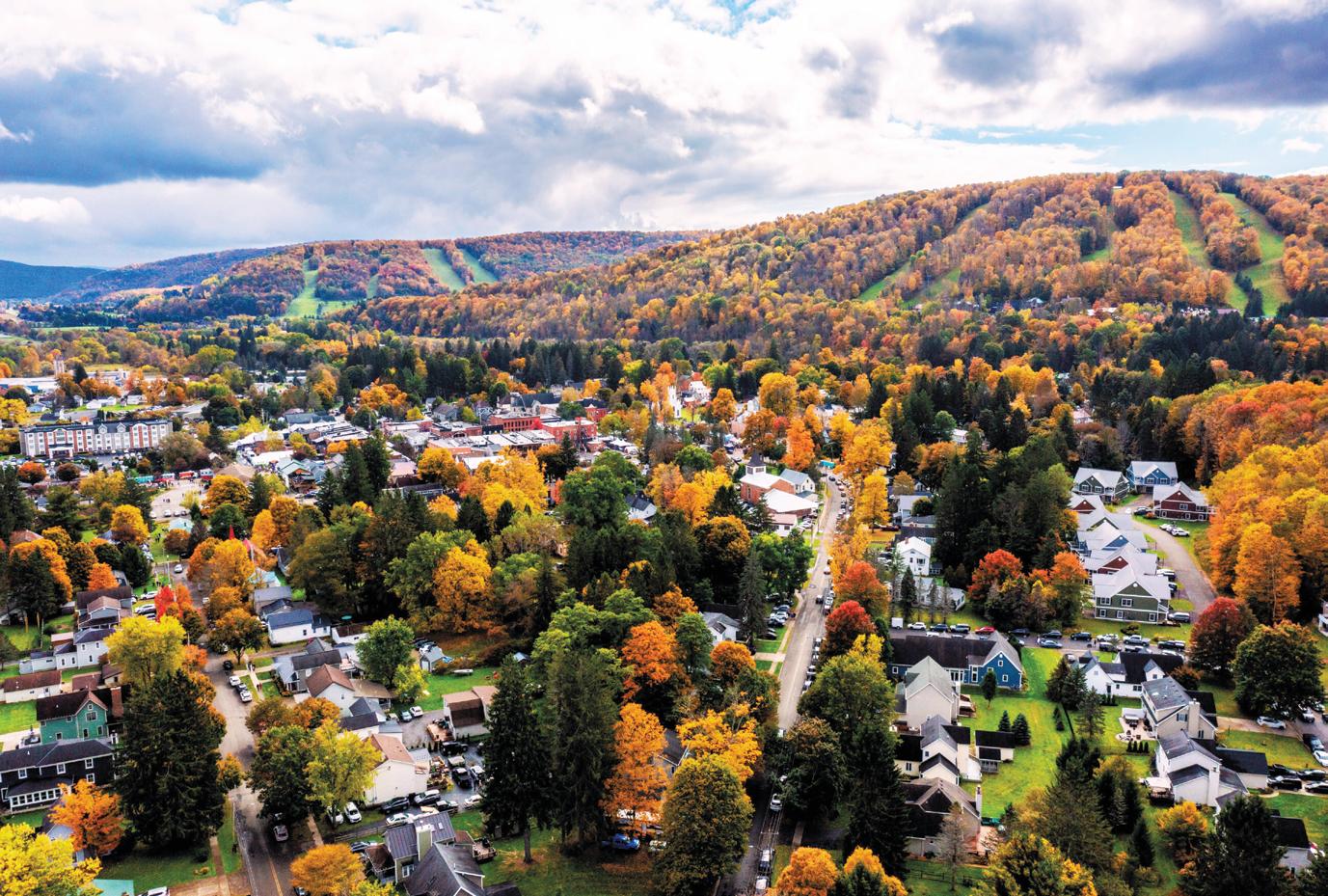
Tucked away in the rolling hills of Western New York, Ellicottville has long been a favourite destination for those who crave a getaway that blends outdoor adventure with small-town charm. Whether you’re looking to play outside, shop at unique boutiques, savour local flavours, or simply relax in a welcoming village, Ellicottville offers it all…and then some.
One of the most unique things about Ellicottville is its walkable village core. Many of the shops, restaurants, cafés, and bars are nestled within just four blocks, making it easy to leave the car behind and set out on foot. e moment you arrive, you’ll notice the laid-back pace, the friendly greetings, and the inviting storefronts that line the streets. A morning stroll might lead you into a cozy coffee shop, a locally-owned clothing store, or a specialty shop stocked with gourmet treats and local flavours.
When it comes to dining and nightlife, Ellicottville packs an incredible variety. Enjoy a farmto-table meal crafted with seasonal ingredients, settle into a lively pub for wings and a cold local
Beausoleil Island, known to the Anishinaabeg as Bimadinaagogi (meaning “a ridge extending and growing along”), has always been more than just a stretch of land in Georgian Bay. Archaeological findings show that people have lived on Beausoleil Island for thousands of years, reflecting its enduring role as both a seasonal home and a key stop along traditional trading routes.
The island is also a place of memory. It embodies the Anishinaabeg’s deep ties to the land, carrying reminders of their lasting presence and the hardships of displacement in Southern Ontario. Ancient campsites remain, alongside evidence of its brief designation as a reserve in the mid-19th century, when the Anishinaabeg sought to uphold traditions while facing the pressures of rapidly expanding EuroCanadian settlement. In spite of these challenges, they adapted with resilience and continuity,
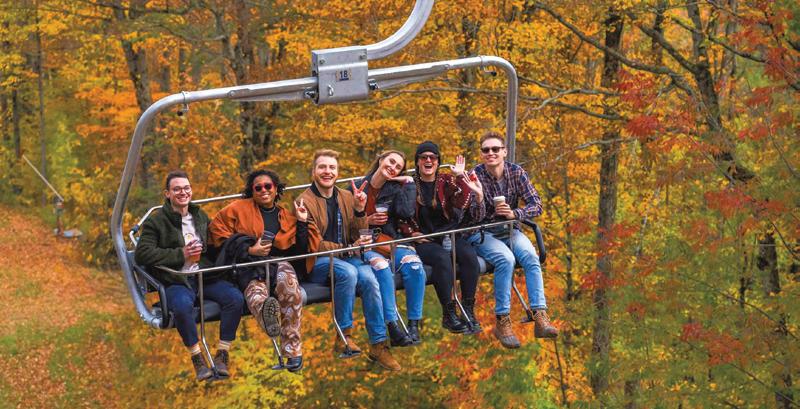
brew, or sip a glass of wine at an intimate bistro. e village boasts a buzzing après-ski and après-adventure scene all year round, with live music often spilling out of bars and onto patios on weekends. Whether you’re celebrating with friends or unwinding after a day outdoors, the dining and drinks in Ellicottville will leave you satisfied. Of course, the village is also a hub for adventure. In the warmer
months, golfers will find pristine fairways at Holiday Valley’s 18hole championship course. In the winter, this four-season resort transforms into a skier’s paradise. If you’re looking for a thrill, head to Sky High Adventure Park, a treetop obstacle course and zipline experience that lets you test your balance, strength, and courage high above the forest floor. For mountain biking enthusiasts, HoliMont opens up a world of
summer adrenaline. Known in winter as North America’s largest private ski club, HoliMont transforms when the snow melts into a premier mountain biking destination. Its downhill trail system offers everything from smooth, flowing runs to technical descents that challenge even seasoned riders.
Not into biking or climbing?
e area is rich with hiking opportunities, fishing streams, and scenic drives that showcase the
ensuring their stories and connections would endure. e island has particular importance for Anishinaabeg women. For generations, they came here to gather berries and medicinal plants and to mark significant life transitions with sacred rituals. ese practices wove together sustenance, spirituality, and community, underscoring how deeply tied identity and survival were—and remain—to the land. In this way, Beausoleil Island is not simply a place
on the map but a keeper of teachings and traditions.
This September marked the formal commemoration of Beausoleil Island’s national historic significance, as Parks Canada and Beausoleil First Nation unveiled a plaque recognizing its central place in Canadian history. This commemoration recognizes not only the island’s past but its ongoing role as a place of cultural continuity. As Chief Joanne Sandy of Beausoleil First Nation explained,
" e peoples of Beausoleil First Nation have a profoundly significant relationship with Bimadinaagogi. Generations of our ancestors both utilized and tended to this land where we once settled. We welcome the designation as a national historic site and appreciate how this effort will not only ensure its natural preservation but also promote it as a place to behold and enjoy. is land will continue to share important pieces of our history as Anishinaabe, that will remain strong for the next seven generations and beyond."

natural beauty of the Enchanted Mountains. Wintertime also welcomes snowshoeing, cross-country skiing and a tubing park that’s fun for all ages. Families, couples, and solo travellers alike will find endless ways to connect with the outdoors, recharge, and explore.
But what truly sets Ellicottville apart is its combination of adventure and village charm. You can spend the day pushing your limits on the greens, the bike trails, or the climbing forest, and then reward yourself in town with a hot meal, live music, and a nightcap. With everything so close, you’ll spend less time planning logistics and more time making memories.
Ellicottville isn’t just a place to visit—it’s a place to experience. A place where adventure and relaxation meet, where the mountains frame every moment, and where the village welcomes you like an old friend. Once you experience it, you’ll understand why so many visitors arrive as guests but leave already planning their return.
For more information about events and trip planning, go to ellicottvilleny.com
Her words are a reminder that the recognition of Beausoleil Island is not just symbolic, it also carries a responsibility. e plaque, written in English, French, and Anishinaabemowin, stands as a testament to this commitment. Since 1999, the Cultural Advisory Circle has worked with Georgian Bay Islands National Park to ensure Indigenous perspectives guide stewardship of the island. eir work embodies reconciliation in action, respecting sacred sites, revitalizing language, and protecting cultural integrity. National historic site designations are more than markers of the past. ey invite Canadians to engage with the living legacies of the people and places that shaped this land. Visiting Beausoleil Island means stepping into a space where history, memory, and landscape converge—a space that continues to grow, extend, and remind us that reconciliation begins with recognition.
Nestled on 20 tranquil wooded acres, just 54 kilometres from the Peace Bridge, lies Western New York’s Four-Star Boutique Country Inn. River Spring Lodge is a chefowned and operated lodging and dining destination that has been welcoming discerning Canadian travellers for nine years.
In 2016, River Spring Lodge opened as a Four-Star Boutique Hotel. In 2018, it was chosen from 10,000 properties in the I Love Inns group as one of the ten most romantic inns in America. In 2022, the lodge was recognized by TripAdvisor as New York State’s highest-rated property in the small inn/bed and breakfast category. Now, with more than 500 five-star ratings, guests continue to praise the exceptional food, service, and accommodations River Spring Lodge has become famous for.
“River Spring Lodge is a beloved destination for many travellers, offering a tranquil

friendly service, which makes their stays memorable. The immaculate cleanliness of the rooms and facilities earns rave reviews, while the well-appointed amenities, including exceptional dining, enhance the experience. e comfortable, beautifully furnished rooms and peaceful atmosphere add to the charm. Many travellers appreciate the hotel’s favourable value, especially compared to national chains, and the serene, remote location is
1961A Church RD Darien
Each guest room is furnished with comfortable leather furniture, a dining table and chairs, a luxury Saatva mattress, soft and firm pillows, double vessel sinks, a spa shower, a soaking tub, terrycloth robes with slippers, and a heated bathroom floor.
Each morning, freshly brewed River Spring Roast coffee or hot tea is quietly delivered outside guest room doors by 7:00 a.m. ermoses keep beverages hot if guests are still resting. A full room-service

between 8:00 and 9:00 a.m.
Chef David trained at the prestigious Culinary Institute of America. His Refined American Cuisine has been developed over many years as he and his wife, Carolyn, served distinguished guests at destination resorts, private corporate retreats, and exclusive sporting lodges across the United States—from the islands of Maine to the Prairies, the Rocky Mountains, the California wilderness, Alaskan glaciers, and the Bering seashore.

Four-course room-service

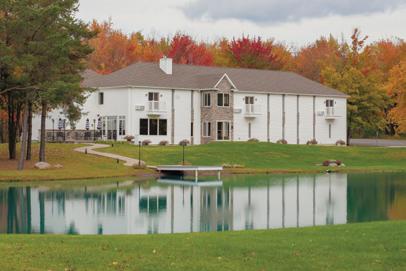
wine dinners are offered Monday through ursday exclusively to overnight guests. On Fridays and Saturdays, the colonial dining room and the chef’s table are open for dinner with live piano music. Each weekend, complimentary light appetizers are served to lodging and dinner guests from 6:00 to 7:00 p.m. in the lobby café, where wine, beer, and soft drinks are available for purchase. For those who have dinner reservations, the salad course is served promptly at 7:00 p.m., followed by entrées and desserts.

THAI EGG SALAD CUPS
ere’s no better time than World Egg Day—October 10th—to learn more about Ontario eggs.
When it comes to eggs, there are a lot of misconceptions out there. For instance, many believe the eggs you buy in the grocery store aren’t fresh, local or that they come from family-run farms. e fact is, nothing could be further from the truth!
In Ontario, there are over 500 egg and pullet farm families that work to bring fresh, local, high-quality eggs to stores across the province. Egg farmers must meet the requirements of rigorous on-farm food safety and animal care programs outlined in the Egg Quality AssuranceTM (EQA®) program. When you buy Ontario eggs in your grocery store, you are supporting local egg and pullet farm families, so look for the EQA® symbol on your next carton of eggs.
is World Egg Day, try something with a bit of global inspiration, like these ai Egg Salad Cups.
ese little cups made from egg roll wrappers bring egg salad to life with a punch of flavour. Give them a try!
Get this recipe and more at getcracking.ca
SERVINGS: 24 PREP TIME: 40 MINUTES COOK TIME: 11 MINUTES
Ingredients
• 6 egg roll wrappers
• Oil spray • 1 tbsp (15ml) vegetable oil
• 6 eggs • 1 stalk lemongrass
• 2 tbsp (30 ml) crushed peanuts
• 2 tbsp (30 ml) finely chopped ai basil
• 2 tbsp (30 ml) mayonnaise
•
• 2
• 2
• Juice of 1 lime
• 24 baby spinach leaves
• Crushed peanuts and ai basil for garnish
Directions
1 Preheat oven to 350°F (180°C).
2 Cut each egg roll wrapper into four equal-size triangles. Working with 1 triangle at a time, join together corners of longest
side; dab a bit of water on one corner and press to hold ends together overlapping slightly along seam to form a cone shape. Press wrapper into the cup of a mini muffin pan to form a cup with an oval leaf shape ensuring that bottom of wrapper is pressed evenly onto bottom of pan, forming an even base. Repeat with remaining triangles to make 24 total. Spray cups lightly with oil to coat. Bake for 7 to 10 minutes or until crisp and golden brown. Let cool.
3 Meanwhile, in a large nonstick skillet, heat oil over medium-high heat. Add eggs, breaking yolks to flatten lightly. Cook for 2 minutes, then flip and cook further 2 minutes or until egg yolks are just set. Remove to a cutting board to cool.
4 Remove tough outer layers of lemongrass stalk and cut off top ⅔ of stalk (save and freeze for soups or stock). Cut and discard hard root end then very finely slice remaining tender portion (about the bottom
third) of stalk. Place in a medium bowl.
5 Add peanuts, basil, mayonnaise, brown sugar, curry paste, fish sauce and lime juice to bowl. Dice cooled eggs and stir into bowl until well coated.
6

e Jakeman family has called Oxford County home since 1876, farming the land and weaving themselves into the fabric of the community. In 1965, Jakeman’s Maple Products were sold roadside—just a side crop at the time. But Bob Jakeman, the
fourth generation, saw something more. He and his brother, Bruce Jakeman, poured their energy into the syrup business, travelling to trade shows and opening up new markets for Ontario maple. Today, Bob’s sons, Chad and Devin, lead Jakeman’s Maple Products
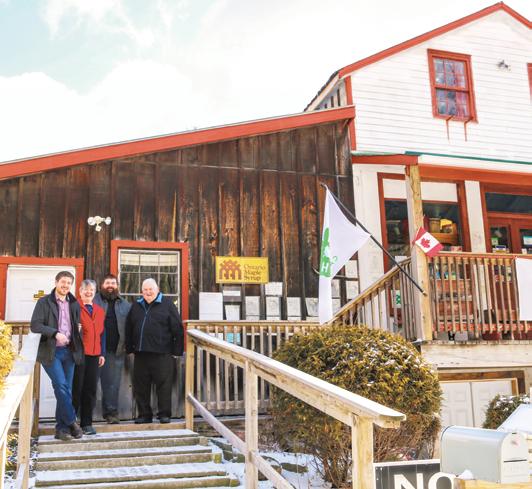
alongside their sister, Kim, and their mother, Mary, bringing their family’s sweet tradition to communities across Canada.
BUILDING ONTARIO’S MAPLE INDUSTRY
is year, Jakeman’s celebrates 150 years of sweetness and of helping to shape Ontario’s maple syrup industry. While Quebec currently produces 90.7 per cent of Canada’s maple syrup, Ontario accounts for just three per cent, despite having more maple trees than Quebec.
The Jakeman Family have been great supporters of many Ontario Producers throughout the years, helping them to set up their productions, selling equipment, troubleshooting issues with new farmers and making connections. Today, Jakeman’s Maple Products partners with over 200 Ontario Maple Producers to bring consumers the great-tasting maple products they have come to love while also creating a market for Ontario’s production to expand and for new farmers to set up their production as well.
In 2020, Jakeman’s expanded its operations with a new 24,000-square-foot facility in Oxford County. For the family, staying local was non-negotiable because it meant keeping jobs in the community and giving back to the region that raised them. Now employing more than 30 people, Jakeman’s continues to invest in community traditions, including the beloved annual Pancake House. For over two decades, the event has partnered with groups like the 4H Clubs of Oxford, teaching youth to “learn to do by doing,” and more recently, the Sweaburg Lions Club. is is another non-negotiable, as this celebration connects neighbours, families, and syrup lovers alike.
You can taste Jakeman’s commitment to quality in every bottle. While they source syrup from over 200 farmers, each batch undergoes their perfected charcoal filtration process to ensure a smooth, consistent fl avour.
In fact, in 2025, Jakeman’s Maple Syrup earned a rare three-star review from the Taste Institute in Belgium! Jakeman’s Maple Products has grown from the roadside stand to now being in over 3,000 retail locations, as well as Duty Free and Souvenir. Their products can be found across Canada and are growing their export market, including the United States, South Korea, Ireland, the UK, Switzerland, and Taiwan. Jakeman’s Maple Products line includes more than just our Maple Syrup; they also offer coffee, tea, popcorn, cookies, candy, toffee, cotton candy, and much more. Whether you discover Jakeman’s in a local shop, on a pancake breakfast plate, or halfway around the world, you’re tasting a story that began 150 years ago on a small farm in Oxford County.
Follow along for recipes and pairings on Instagram @jakemansmapleproducts, or visit jakemansmaplesyrup.com to explore their full range of products.







